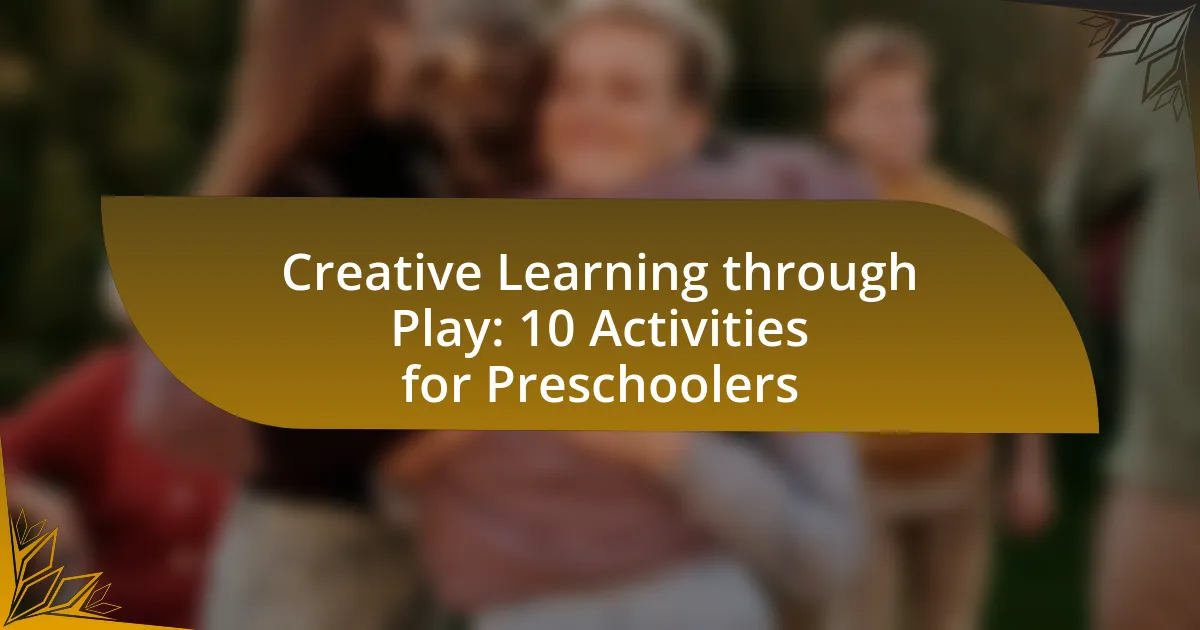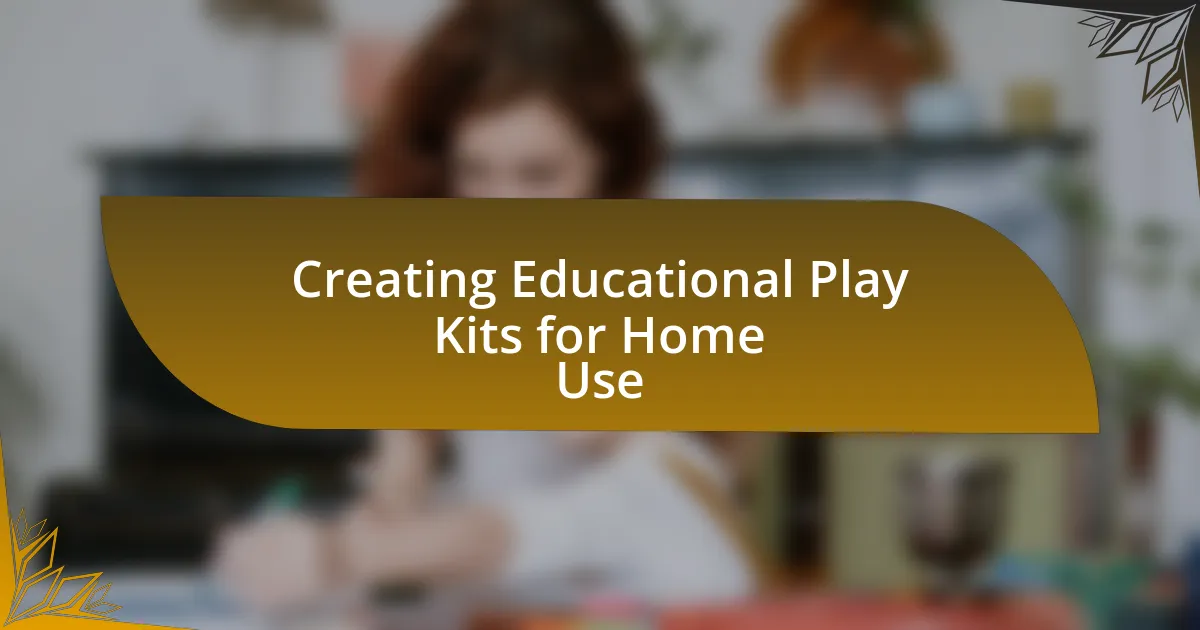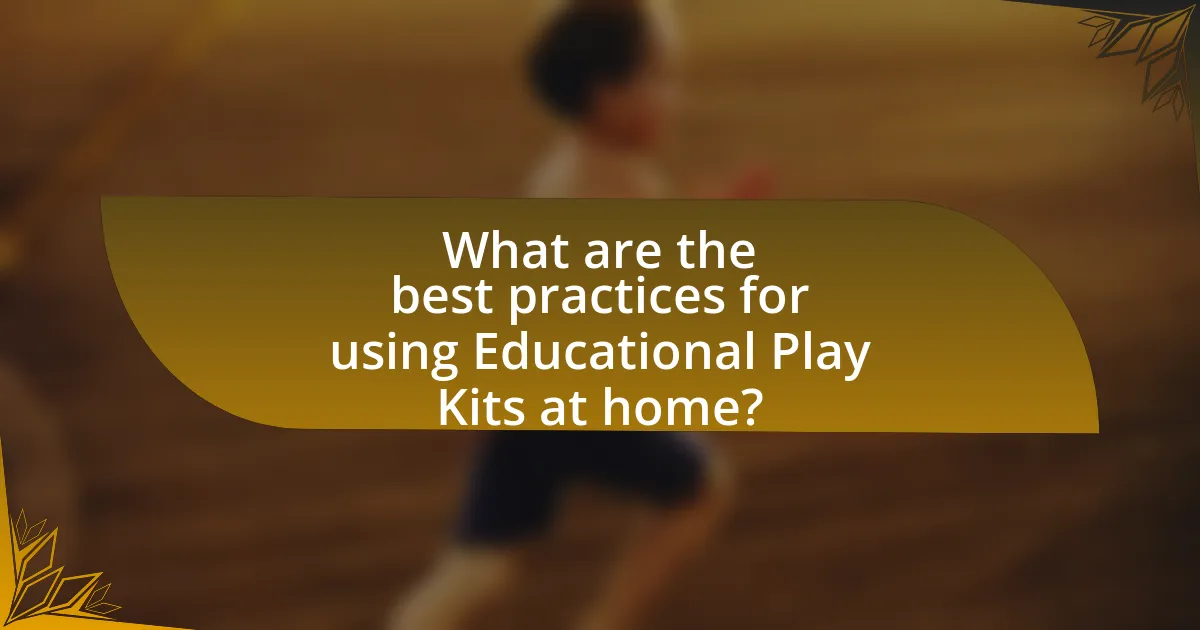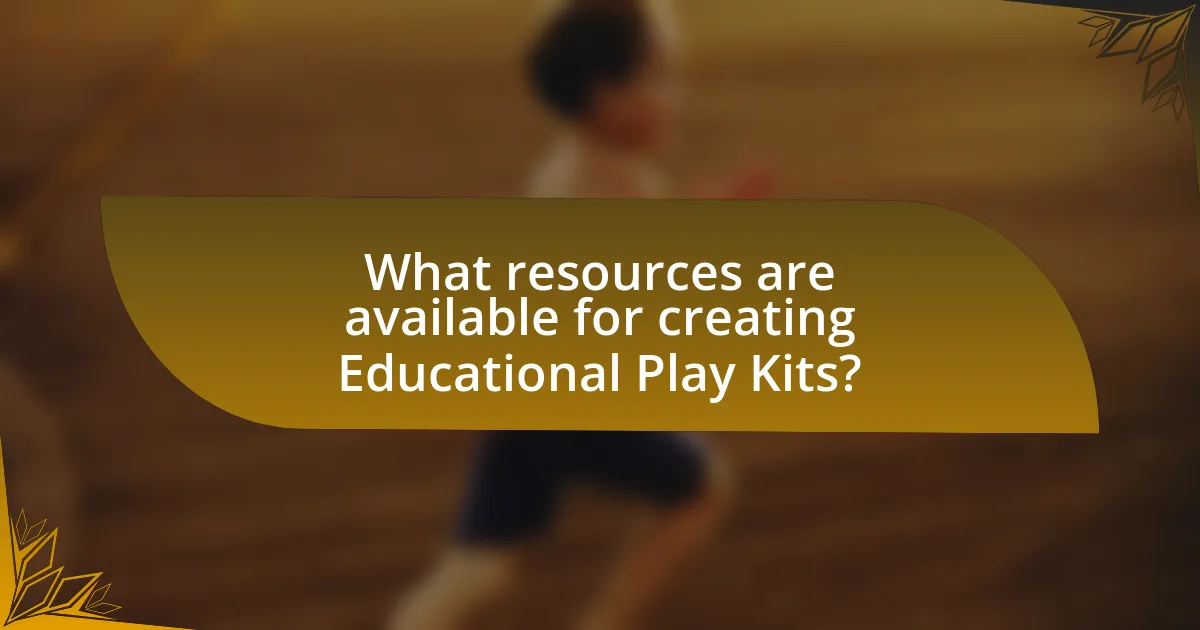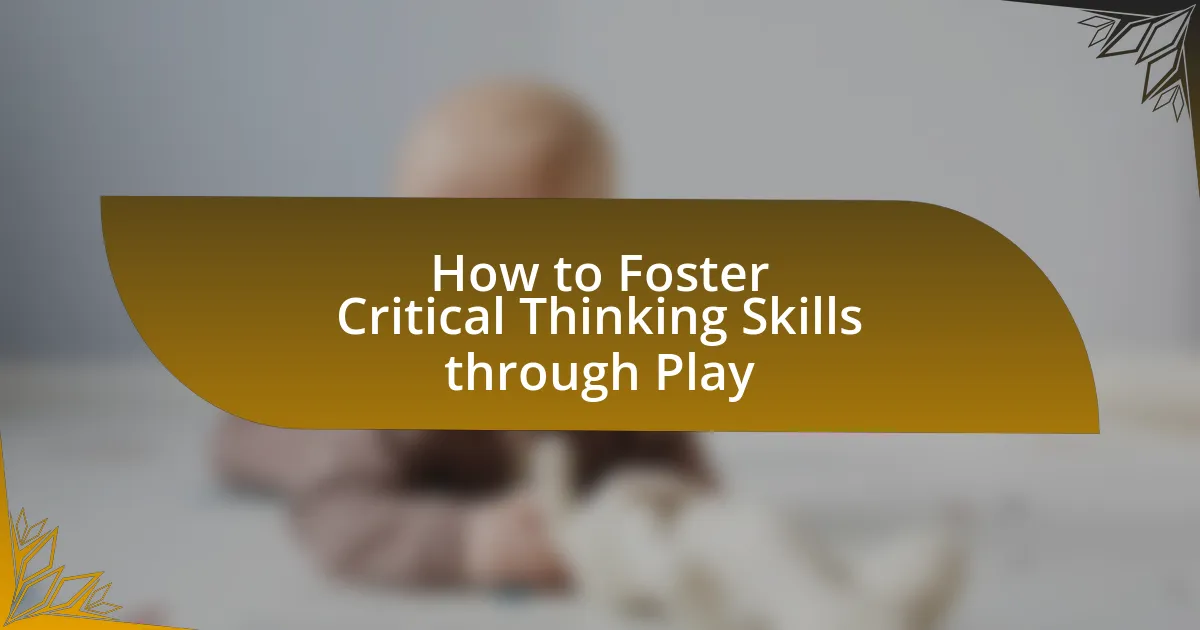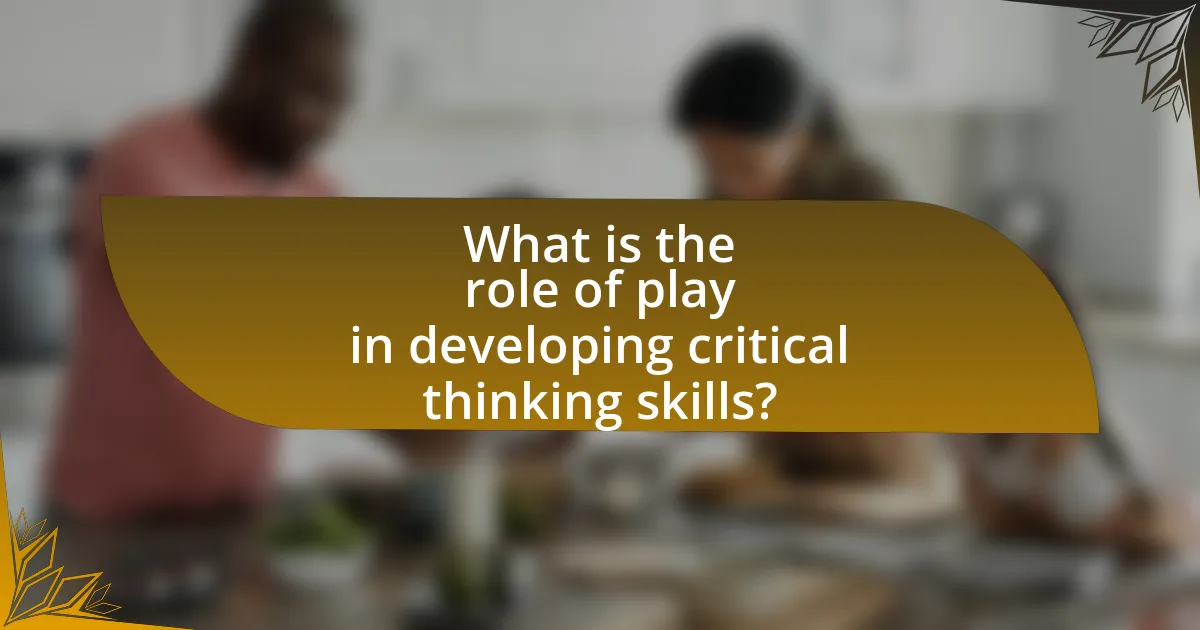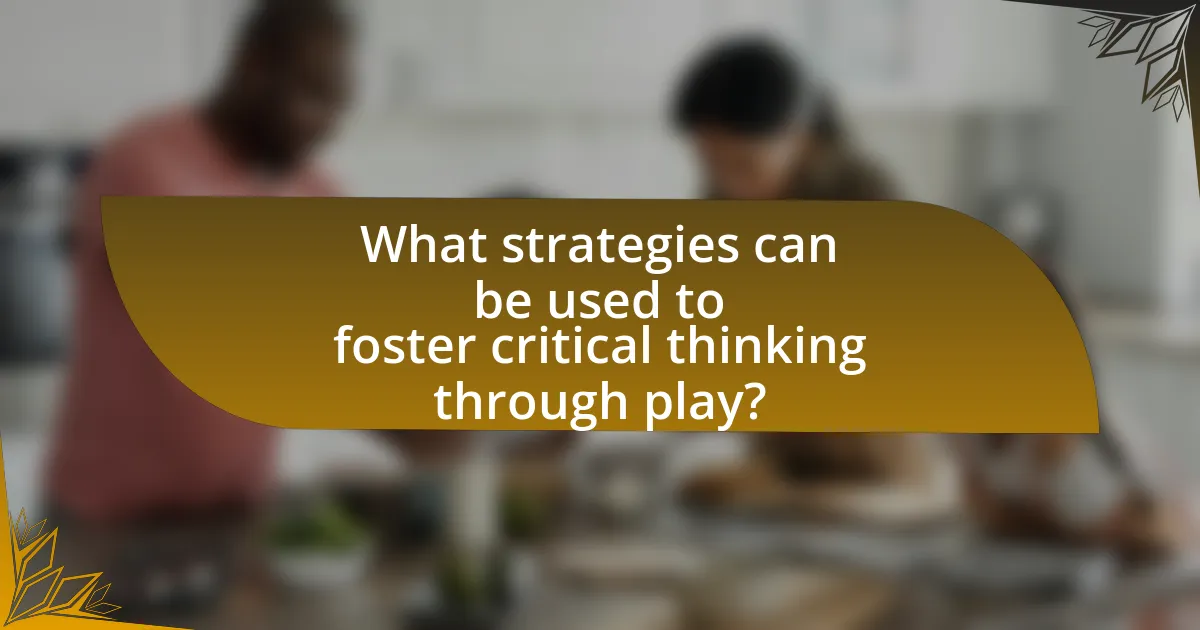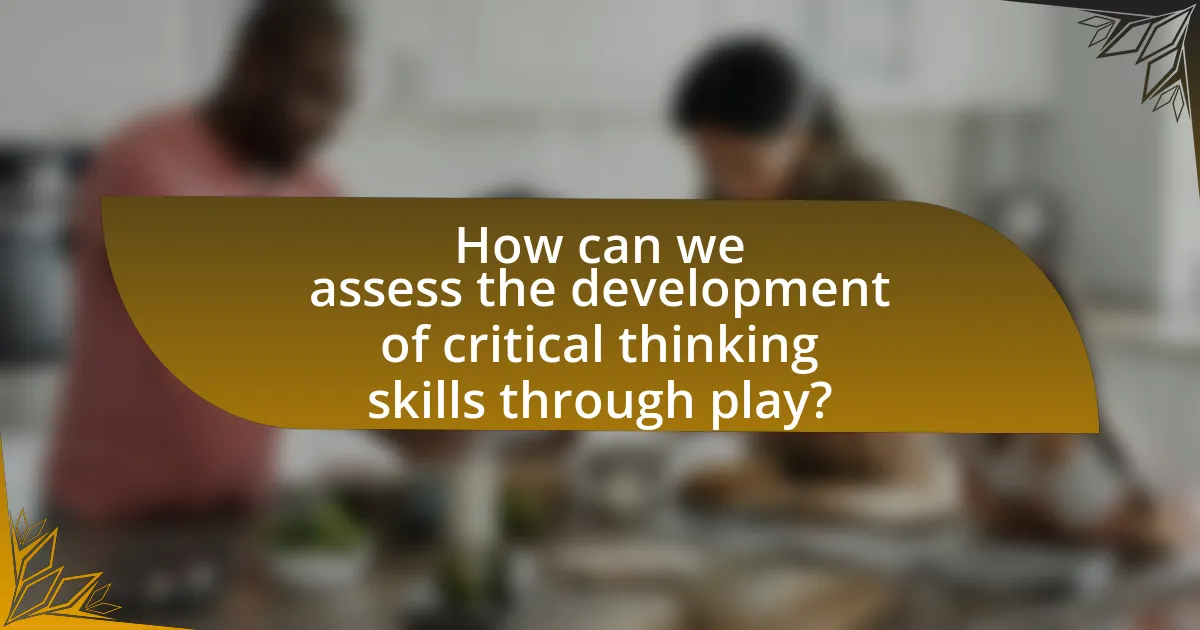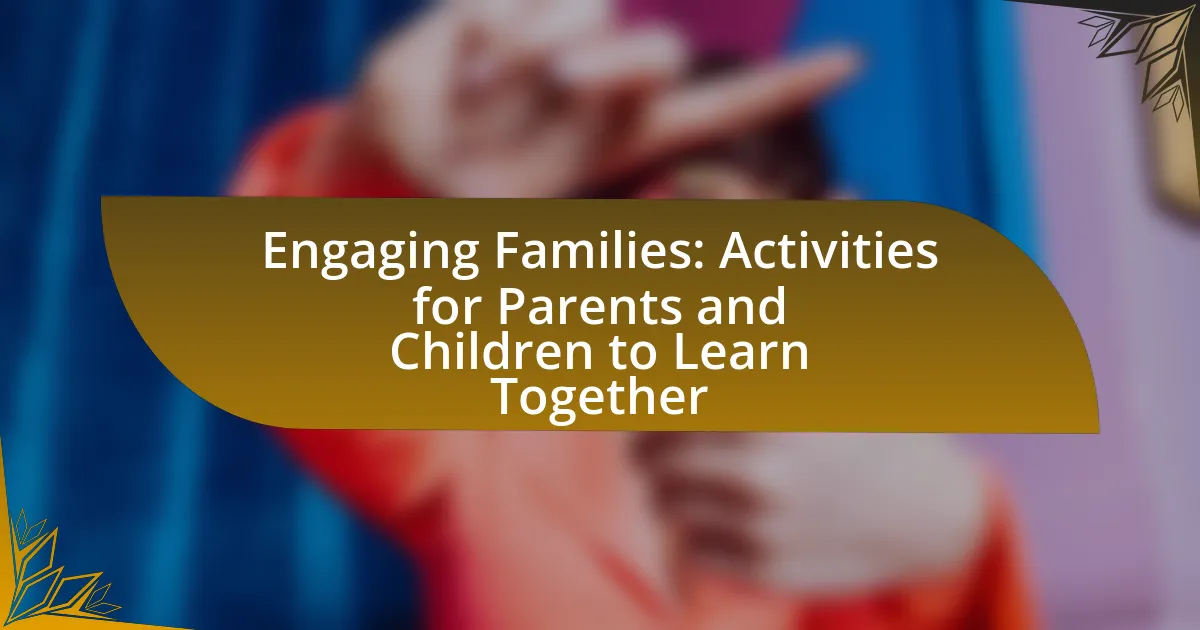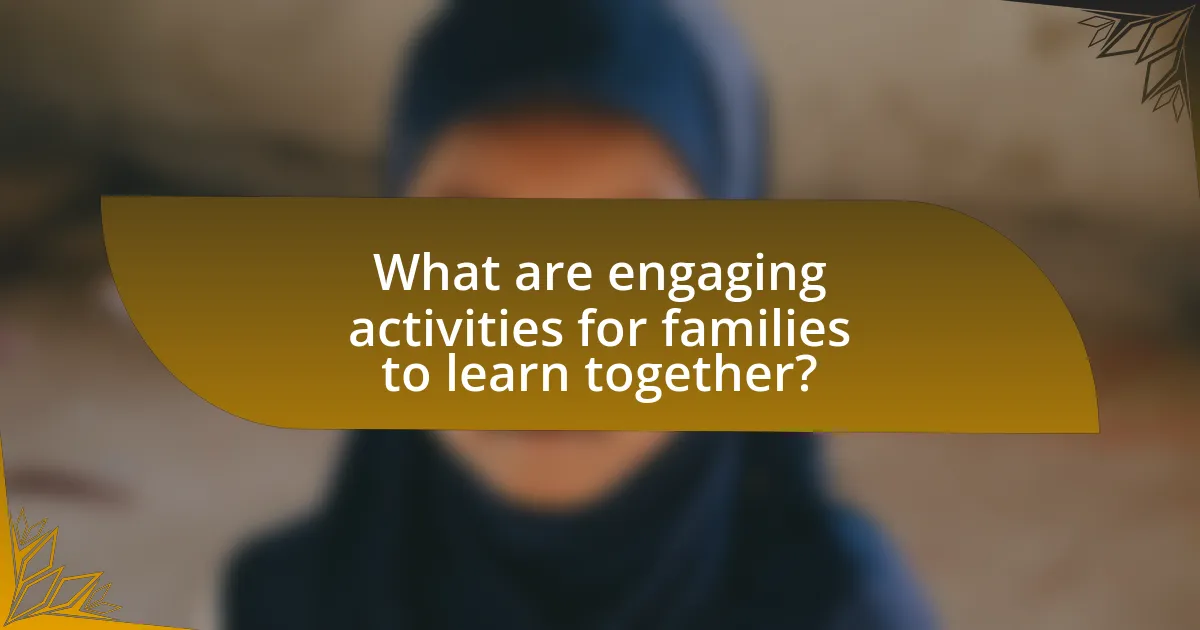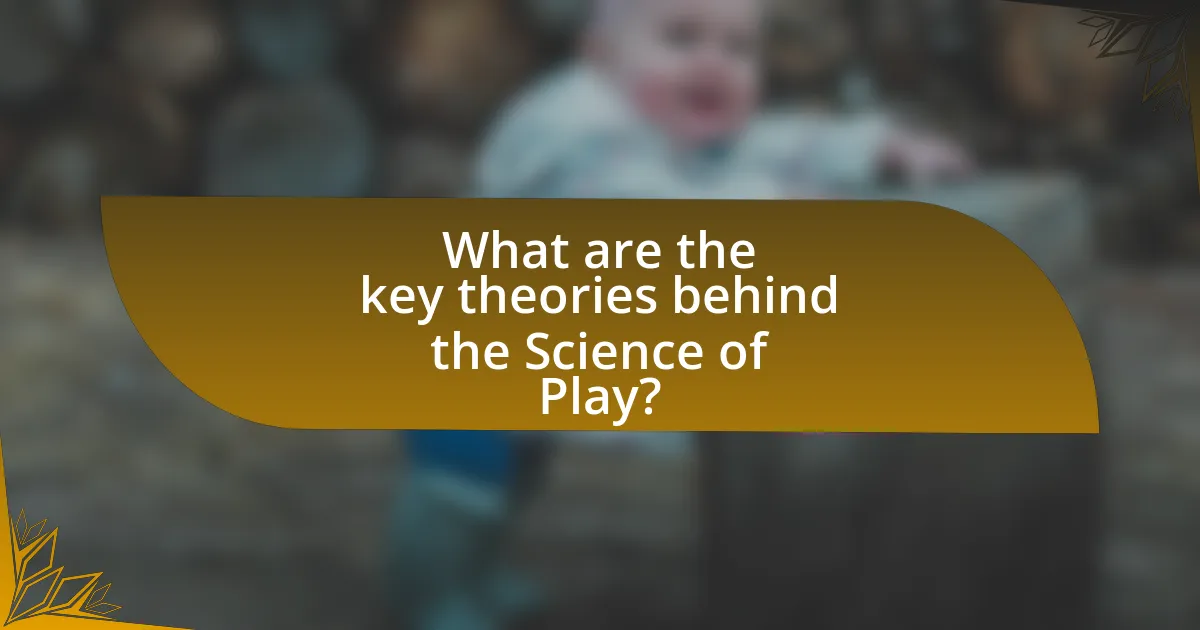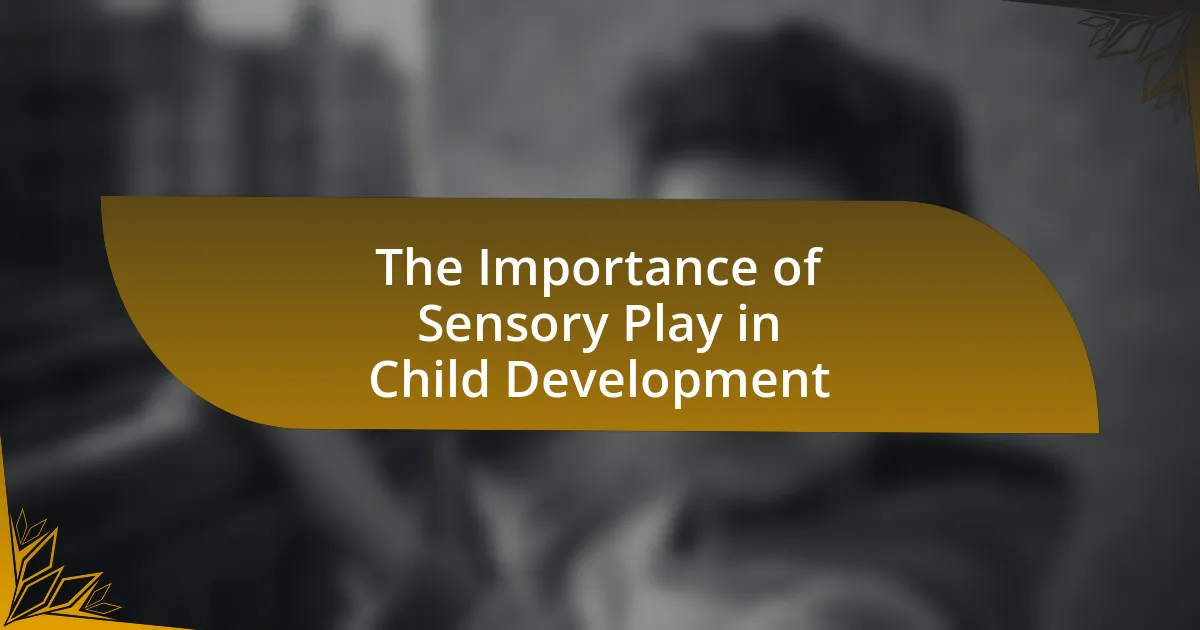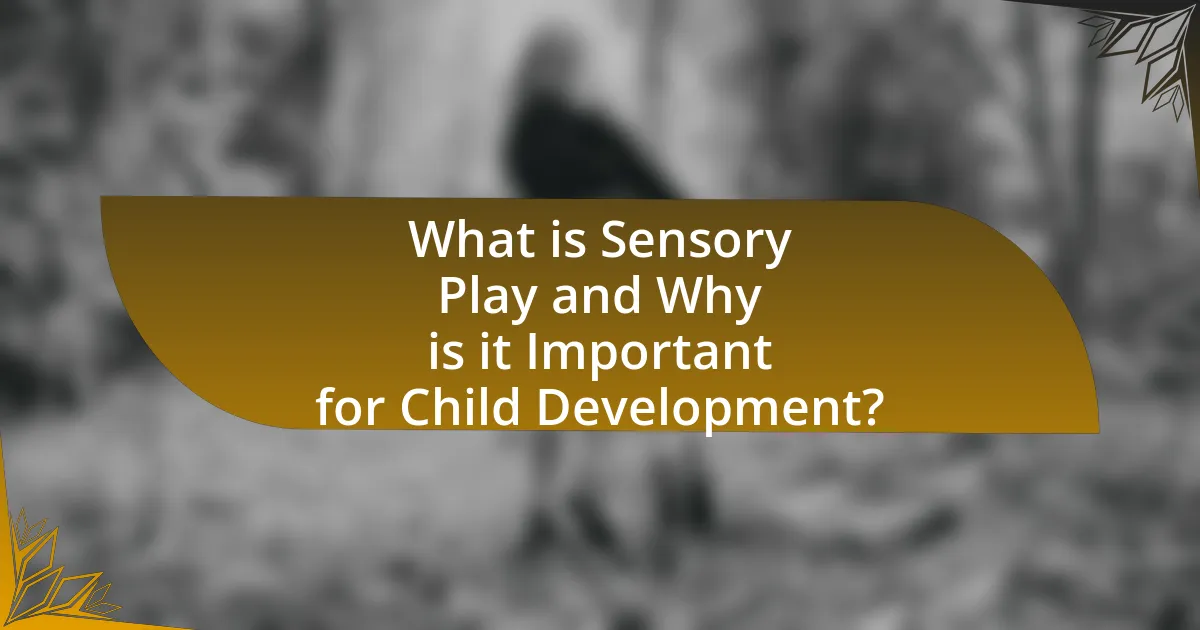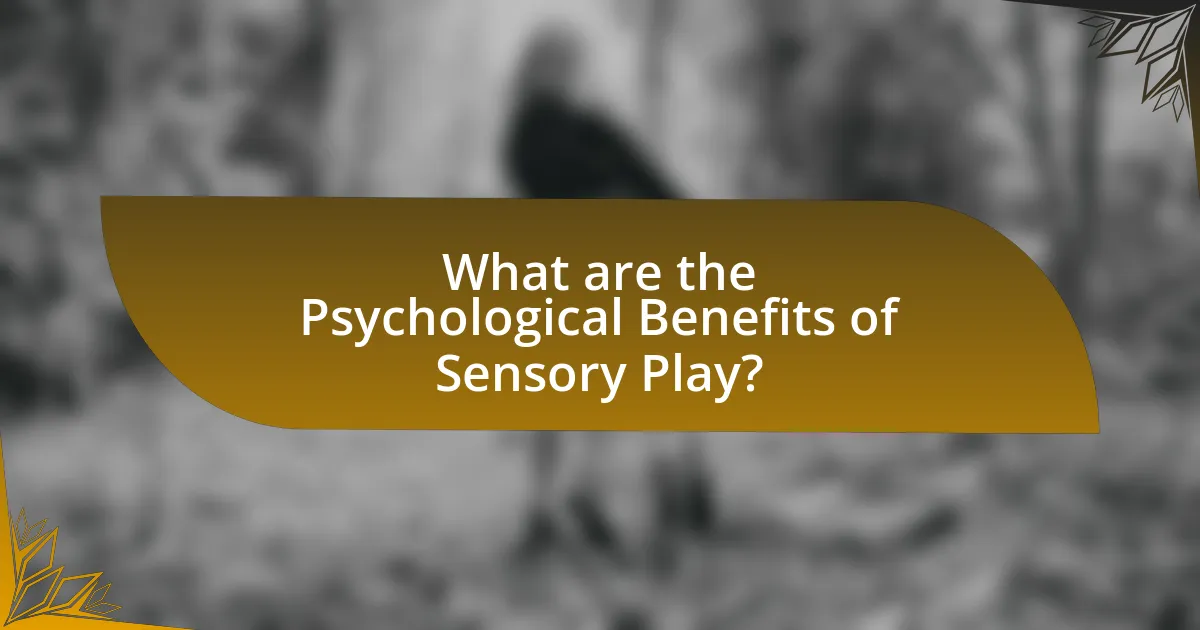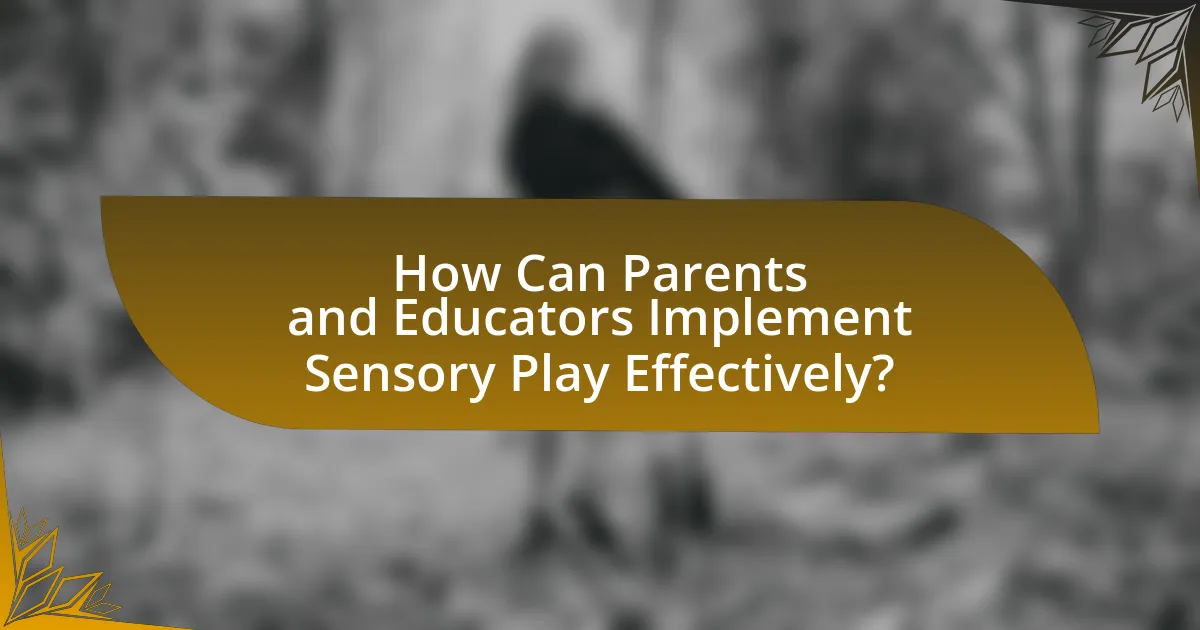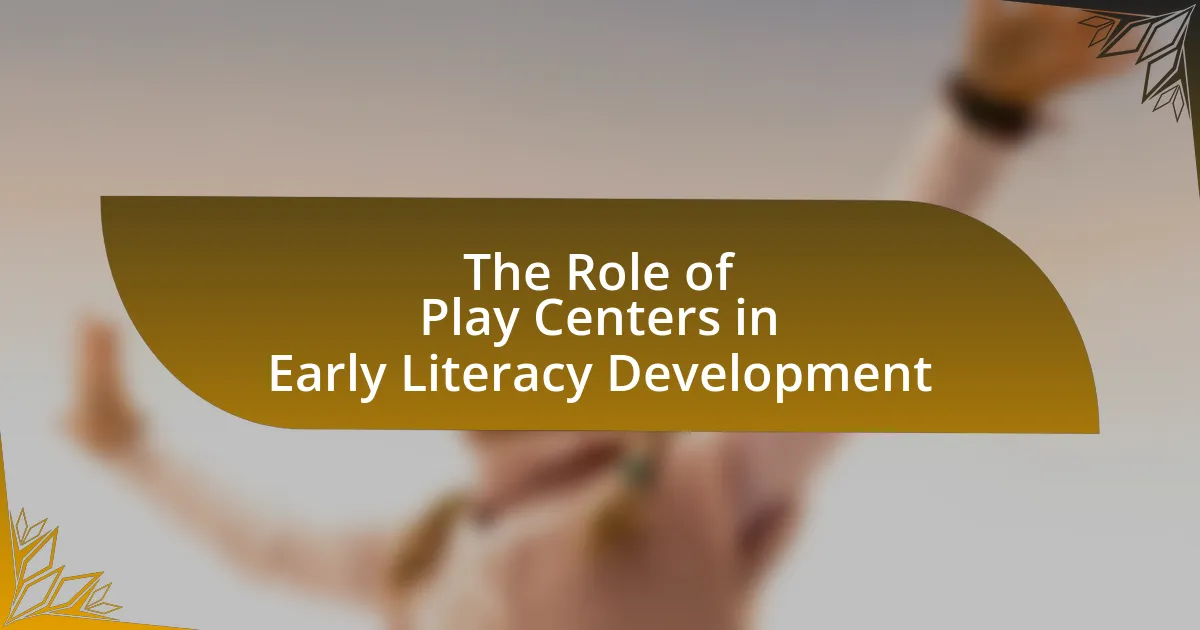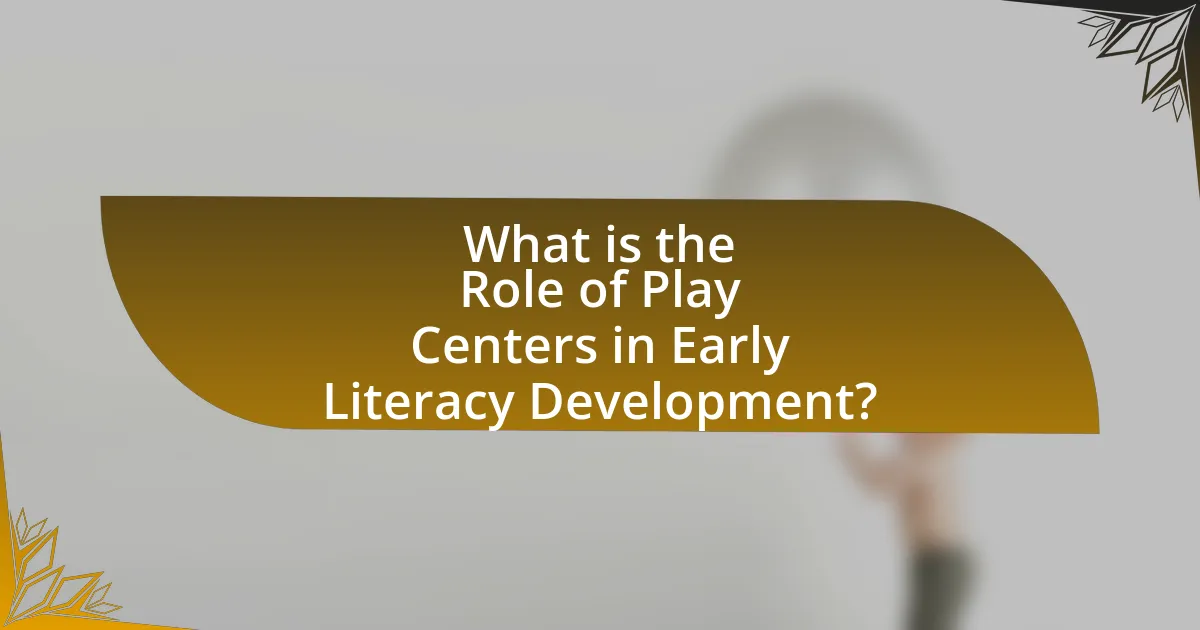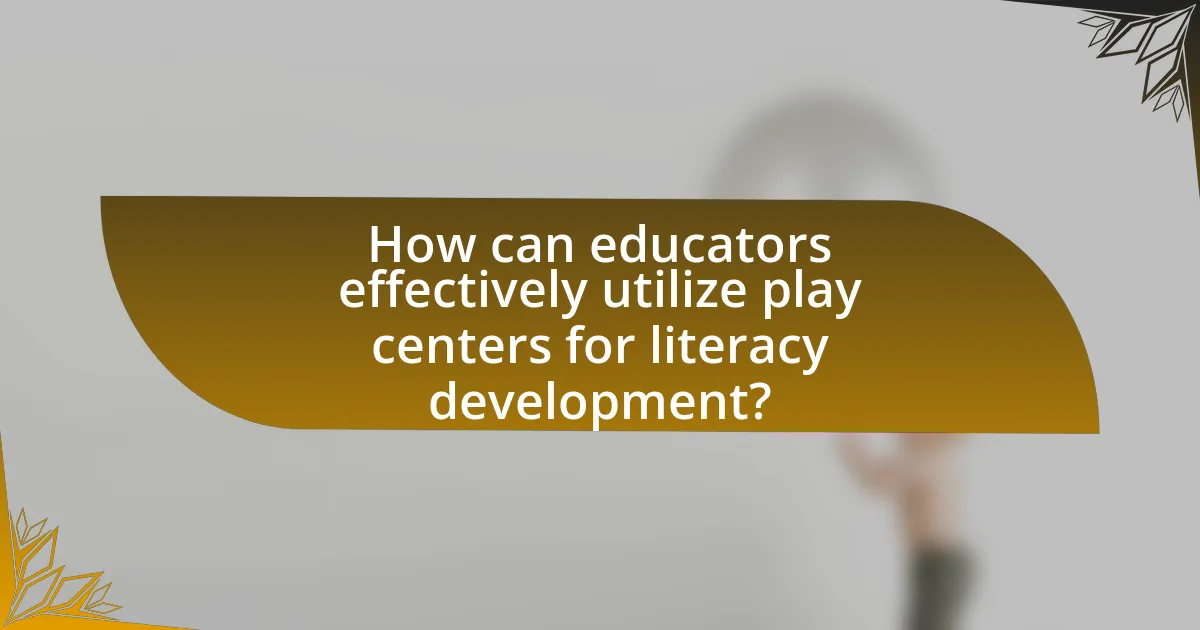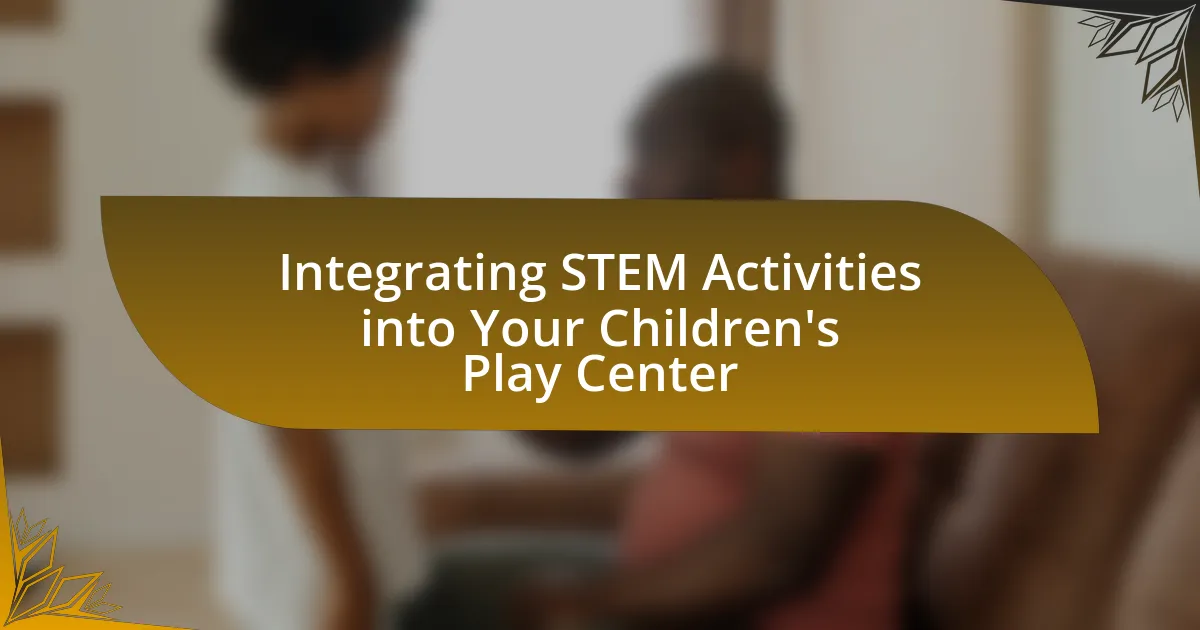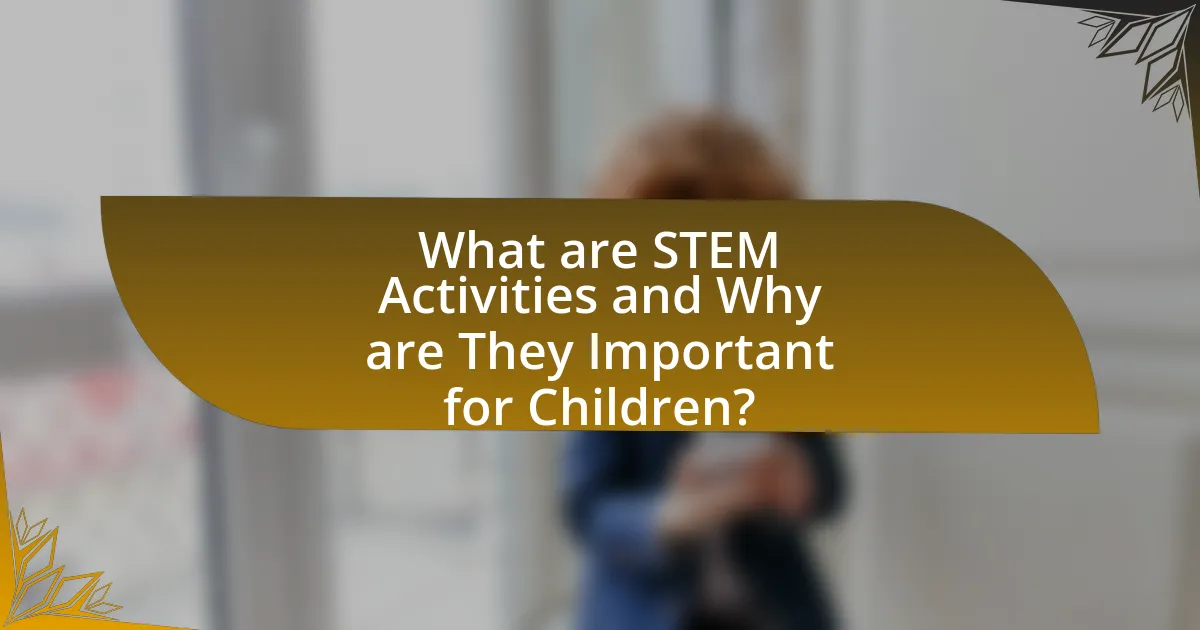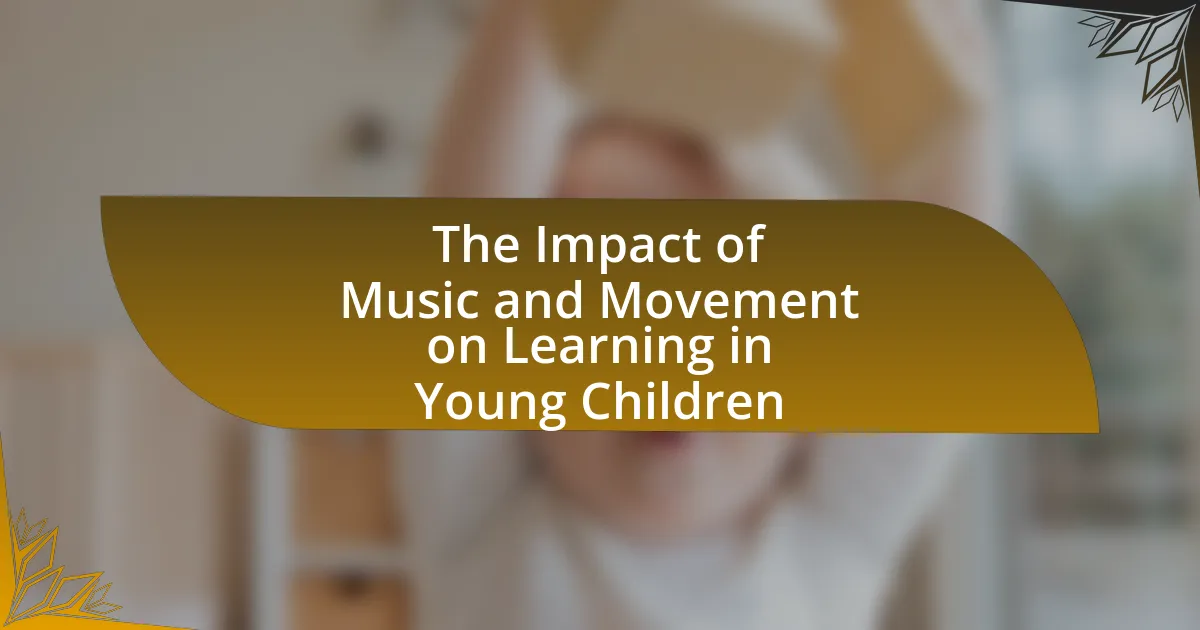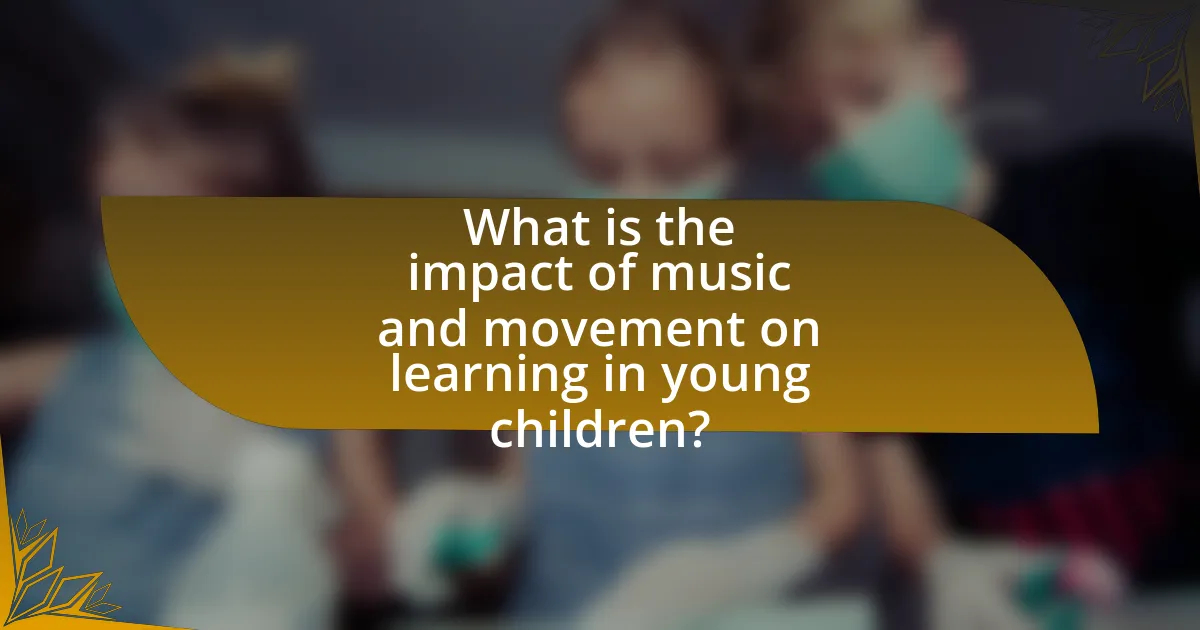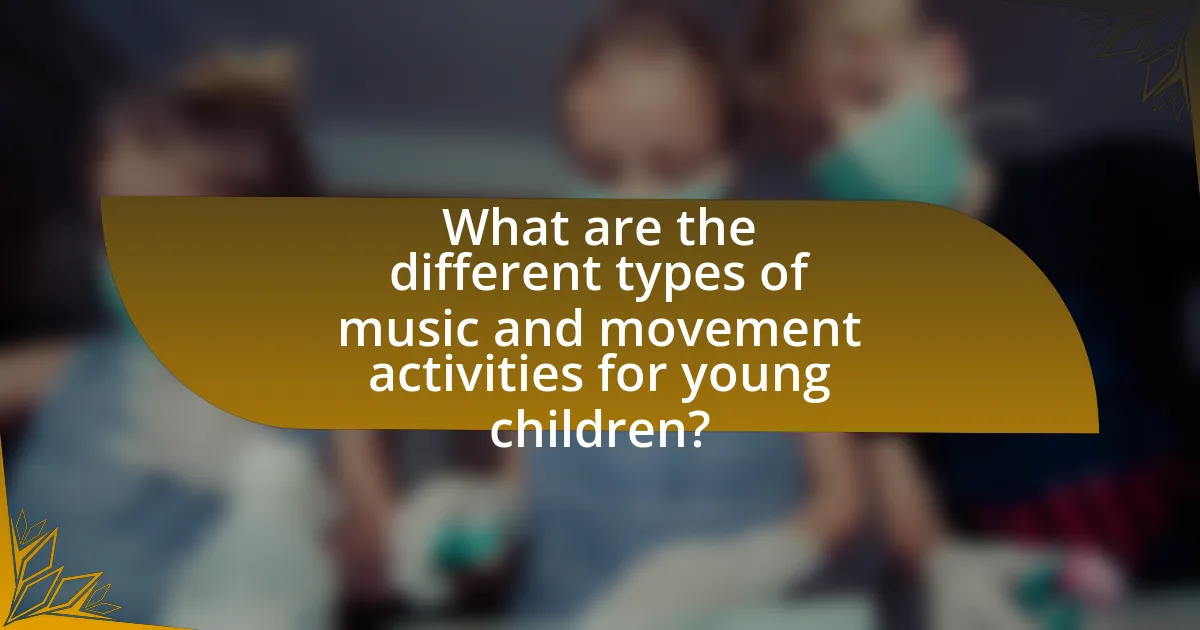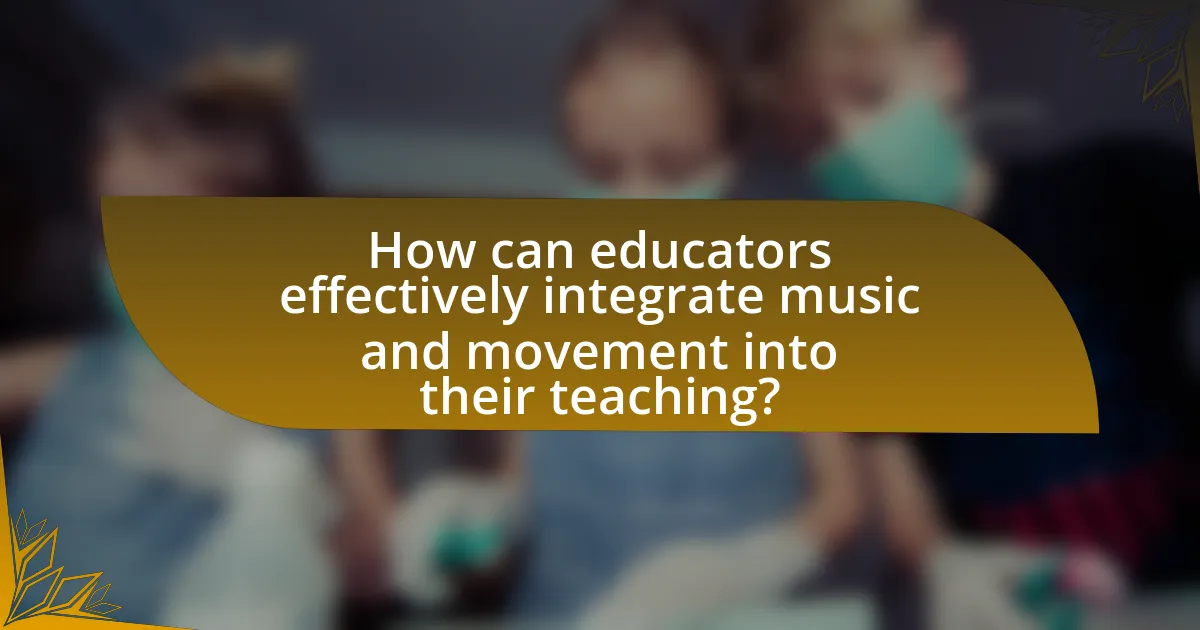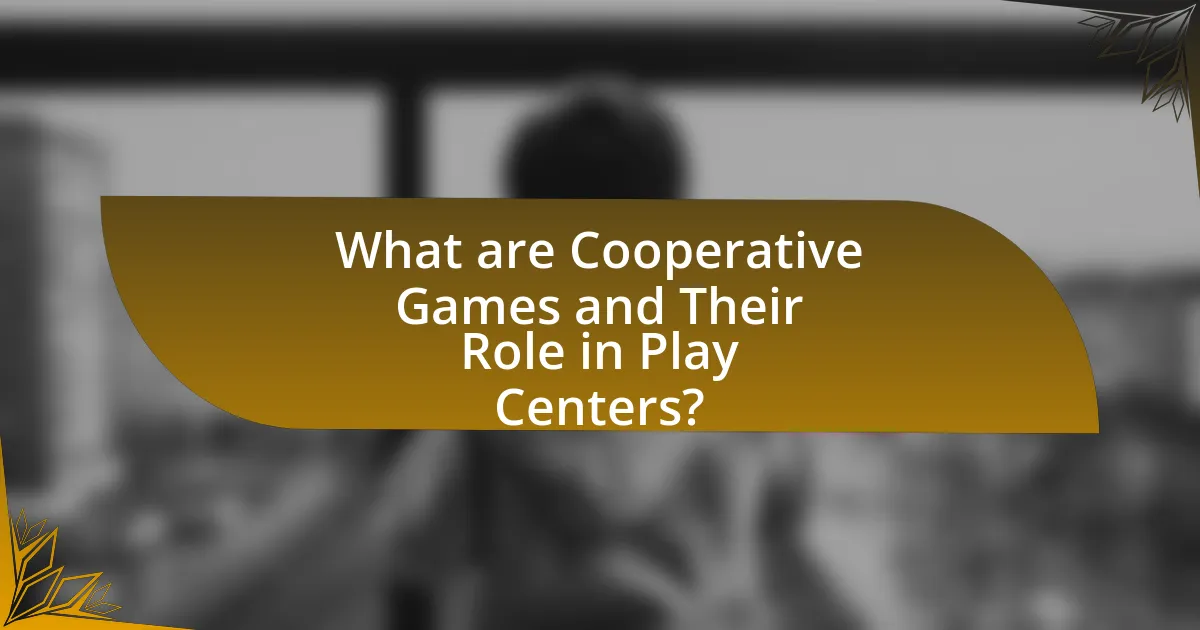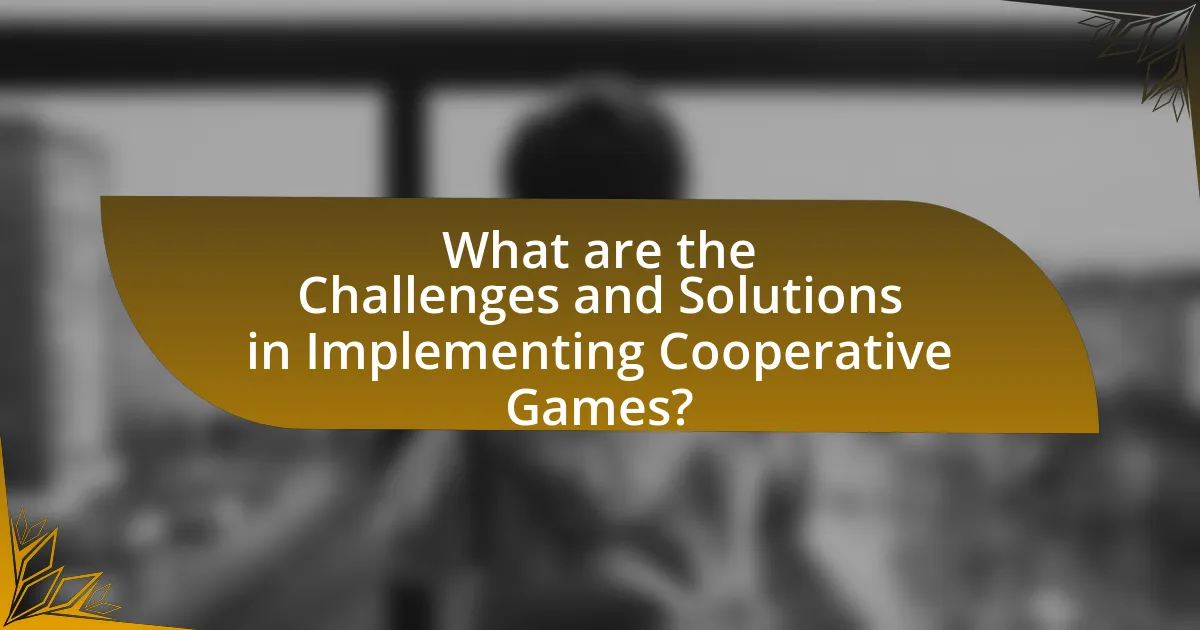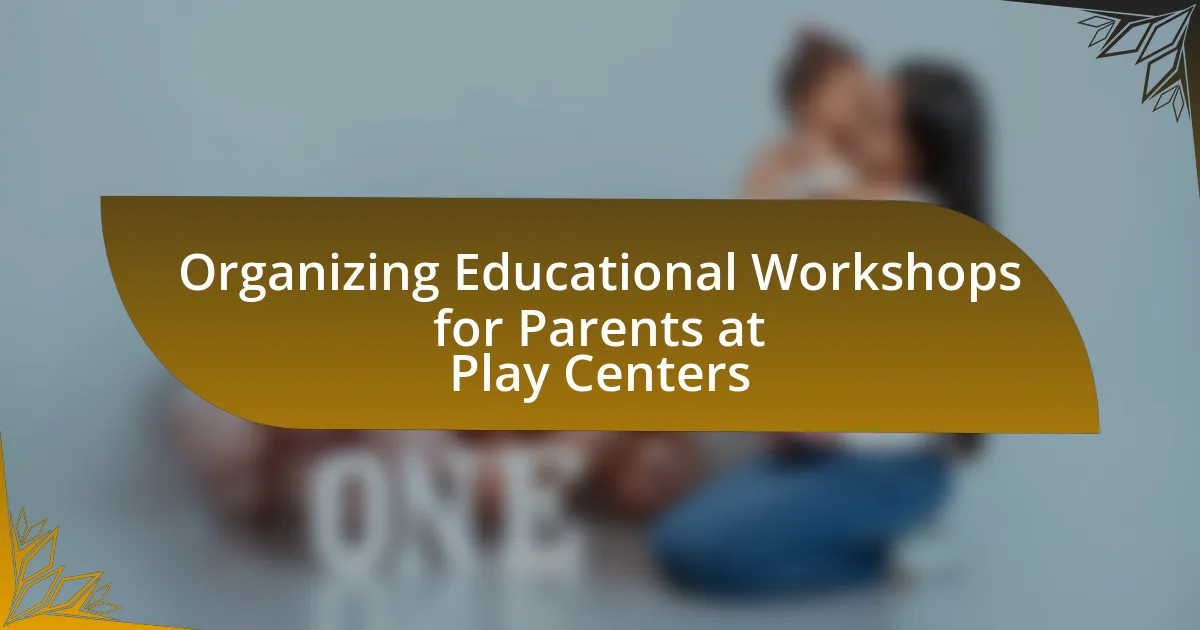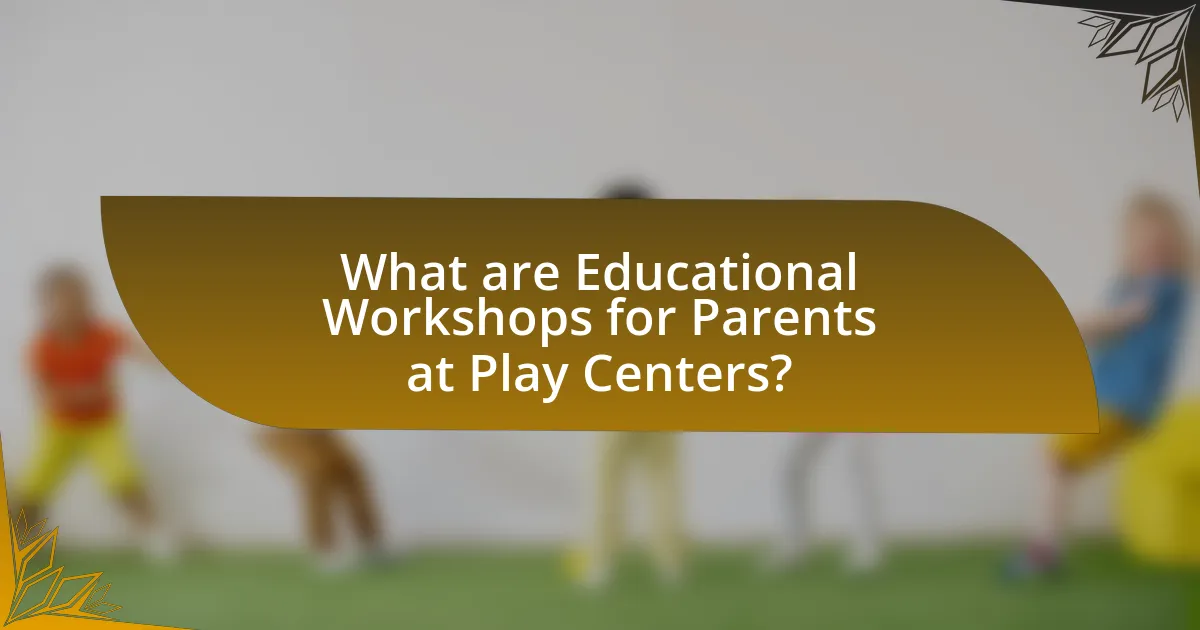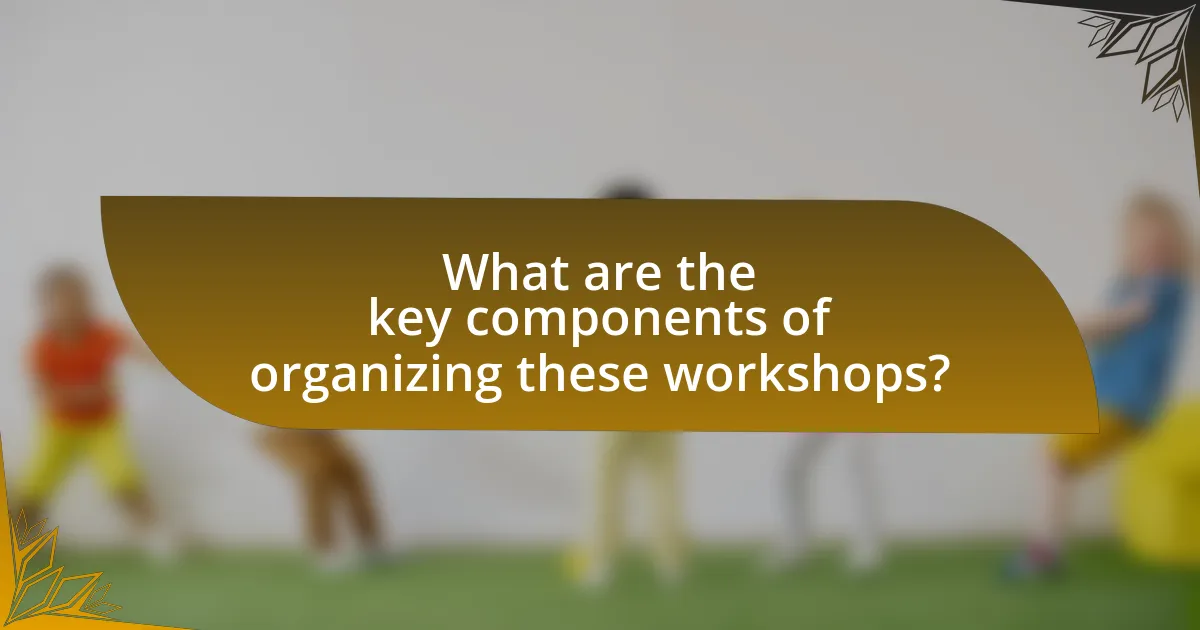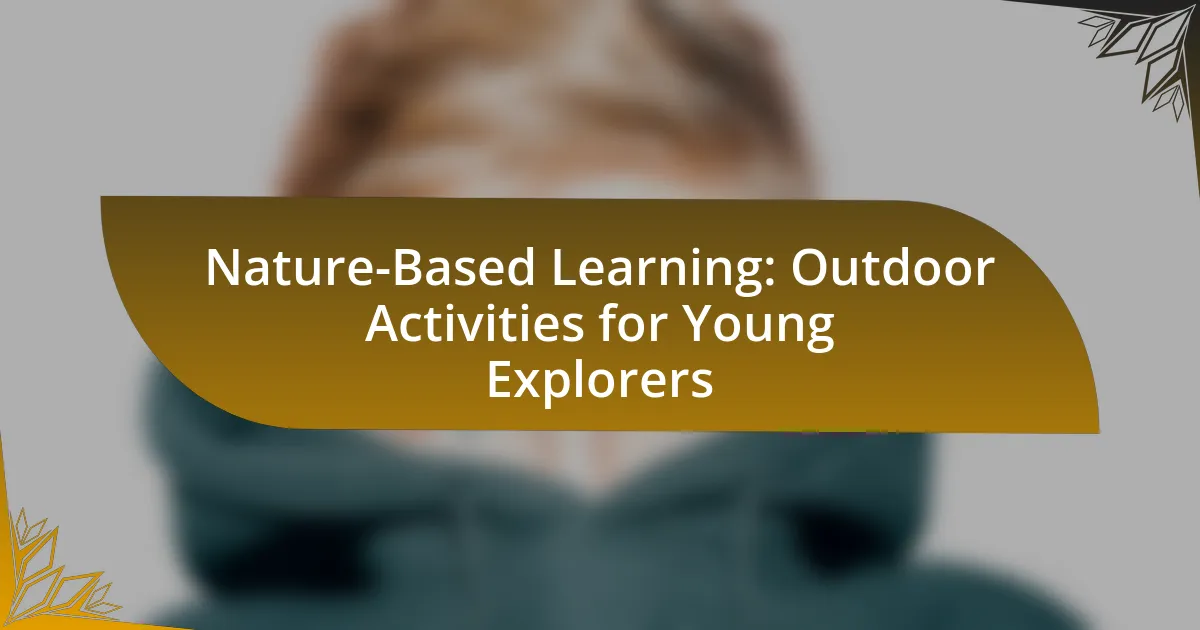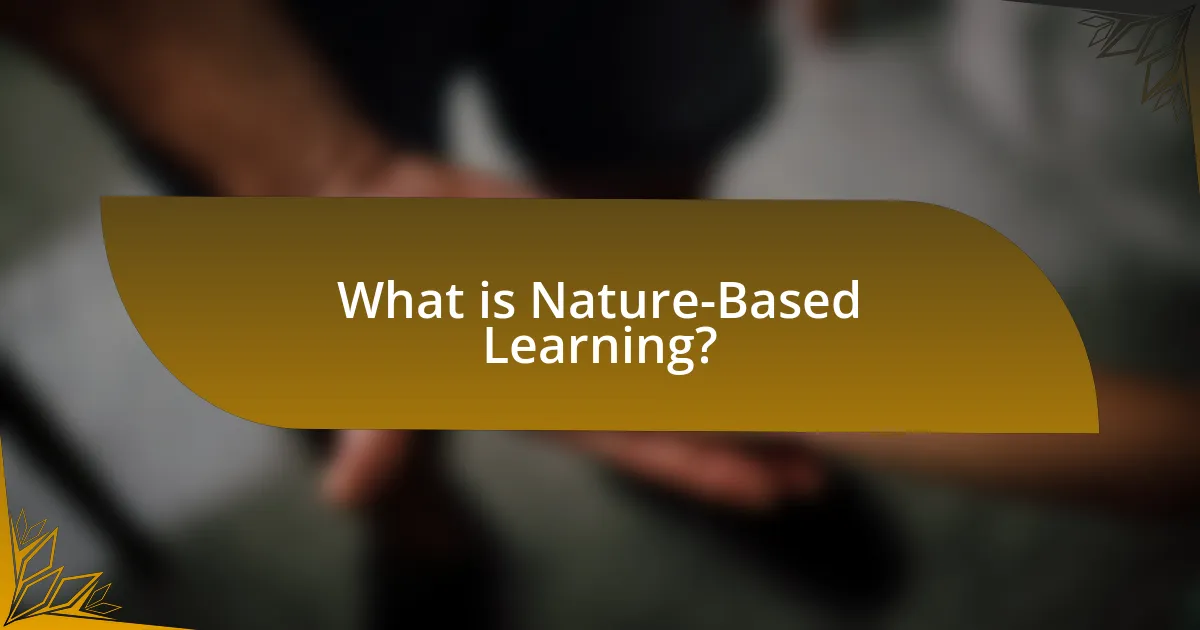Creative Learning through Play is an educational approach that utilizes play as a primary method for children to explore and learn, significantly benefiting preschoolers by enhancing their cognitive, social, and emotional development. This article outlines the advantages of play-based learning, including improved problem-solving skills, creativity, and social interactions among children. It also presents ten specific activities designed to foster creative learning through play, such as role-playing, storytelling, and outdoor exploration. Additionally, the article discusses the theoretical foundations supporting play in education and offers practical strategies for parents and educators to effectively implement these activities in various learning environments.

What is Creative Learning through Play?
Creative Learning through Play is an educational approach that integrates play as a fundamental method for children to explore, discover, and learn. This method emphasizes the importance of imaginative and interactive experiences, allowing children to develop cognitive, social, and emotional skills through engaging activities. Research indicates that play-based learning enhances problem-solving abilities and fosters creativity, as children actively participate in their learning process, making connections between concepts and real-world applications.
How does Creative Learning through Play benefit preschoolers?
Creative Learning through Play significantly benefits preschoolers by enhancing their cognitive, social, and emotional development. Engaging in play-based learning allows preschoolers to explore their environment, fostering critical thinking and problem-solving skills. Research indicates that children who participate in play-based learning demonstrate improved language skills and creativity, as they often engage in storytelling and imaginative scenarios. For instance, a study published in the journal “Child Development” by researchers from the University of California found that children who engaged in structured play showed higher levels of executive function, which is crucial for academic success. This evidence underscores the importance of creative learning through play in shaping well-rounded, capable individuals.
What cognitive skills are developed through play?
Play develops several cognitive skills, including problem-solving, critical thinking, and memory. Engaging in play activities encourages children to navigate challenges, make decisions, and remember rules or sequences, which enhances their cognitive development. Research indicates that play-based learning significantly improves children’s ability to think creatively and analytically, as evidenced by studies showing that children who participate in play-based activities score higher on assessments of cognitive skills compared to those who do not.
How does play enhance social interactions among preschoolers?
Play enhances social interactions among preschoolers by providing opportunities for cooperative engagement, communication, and conflict resolution. During play, children learn to share, take turns, and negotiate roles, which fosters social skills essential for building relationships. Research indicates that play-based activities, such as group games and imaginative play, significantly improve children’s ability to interact with peers, as they practice empathy and develop emotional intelligence. For instance, a study published in the journal “Child Development” found that children who engage in cooperative play demonstrate higher levels of social competence and are more likely to form friendships.
Why is play an essential part of early childhood education?
Play is an essential part of early childhood education because it fosters cognitive, social, and emotional development in young children. Engaging in play allows children to explore their environment, develop problem-solving skills, and enhance their creativity. Research indicates that play-based learning improves academic outcomes; for instance, a study published in the journal “Child Development” found that children who participated in play-based curricula showed greater gains in literacy and math skills compared to those in traditional settings. Additionally, play encourages social interaction, helping children learn cooperation, negotiation, and conflict resolution, which are critical skills for their future.
What theories support the importance of play in learning?
Theories that support the importance of play in learning include Piaget’s Cognitive Development Theory, Vygotsky’s Social Development Theory, and the Constructivist Theory. Piaget posited that play is essential for cognitive development, allowing children to explore and understand their environment through hands-on experiences. Vygotsky emphasized the social aspects of play, suggesting that it fosters communication and collaboration, which are crucial for learning. Constructivist Theory, supported by researchers like Jerome Bruner, asserts that children construct knowledge through active engagement and exploration, with play serving as a vital mechanism for this process. These theories collectively highlight that play is not merely a leisure activity but a fundamental component of effective learning and development in early childhood.
How does play-based learning differ from traditional learning methods?
Play-based learning emphasizes active engagement and exploration through play, while traditional learning methods focus on structured instruction and rote memorization. In play-based learning, children learn by interacting with their environment, which fosters creativity, problem-solving, and social skills. Research indicates that play-based approaches enhance cognitive development and retention of information, as children are more likely to remember concepts learned through hands-on experiences. In contrast, traditional methods often prioritize standardized testing and passive learning, which can limit critical thinking and creativity. Studies, such as those conducted by the National Association for the Education of Young Children, support the effectiveness of play-based learning in promoting holistic development in early childhood education.
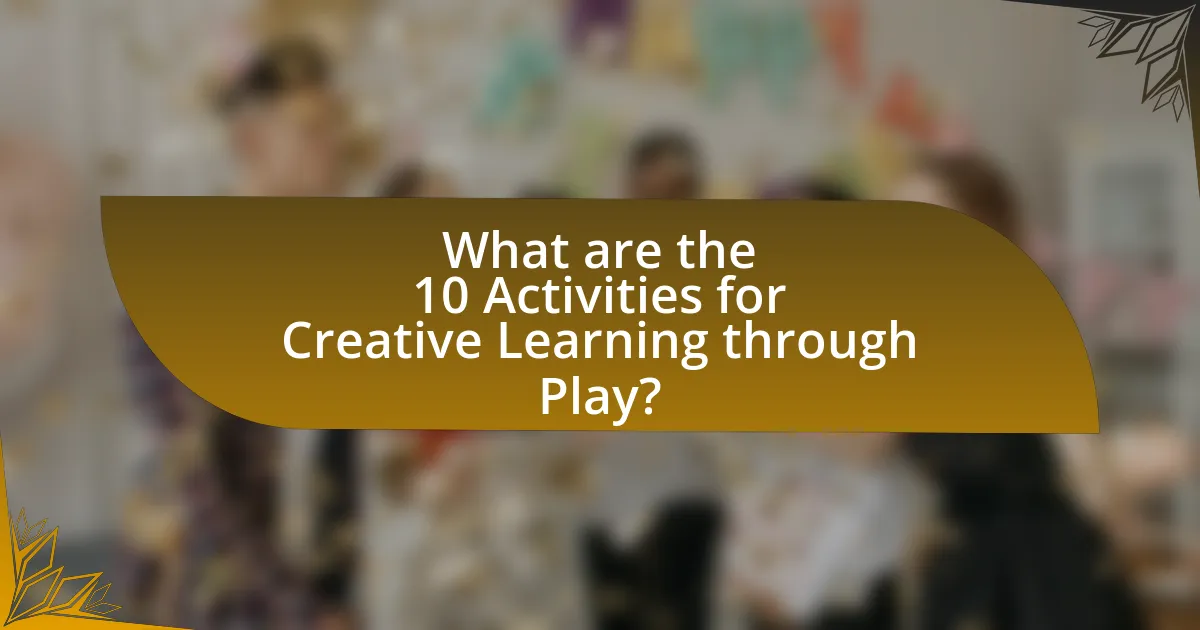
What are the 10 Activities for Creative Learning through Play?
The 10 activities for creative learning through play include:
- Role-Playing: Children engage in imaginative scenarios, enhancing social skills and creativity.
- Building Blocks: Using blocks fosters spatial awareness and problem-solving abilities.
- Art Projects: Activities like painting and drawing stimulate creativity and fine motor skills.
- Storytelling: Encouraging children to create stories develops language skills and imagination.
- Nature Exploration: Outdoor activities promote curiosity and understanding of the environment.
- Music and Movement: Dancing and playing instruments enhance rhythm and coordination.
- Puppet Shows: Creating and performing with puppets encourages expression and storytelling.
- Sensory Play: Activities involving sand, water, or playdough stimulate sensory development.
- Science Experiments: Simple experiments introduce scientific concepts and critical thinking.
- Games with Rules: Structured games teach cooperation, turn-taking, and strategic thinking.
These activities are supported by educational theories emphasizing the importance of play in early childhood development, such as those proposed by Piaget and Vygotsky, which highlight play as a critical component of learning and cognitive growth.
How can storytelling enhance creativity in preschoolers?
Storytelling enhances creativity in preschoolers by stimulating their imagination and encouraging them to think beyond reality. When preschoolers engage with stories, they visualize characters, settings, and events, which fosters imaginative thinking. Research indicates that storytelling promotes cognitive development by allowing children to explore different perspectives and scenarios, thereby enhancing their problem-solving skills. For instance, a study published in the journal “Child Development” found that children who participated in storytelling activities demonstrated improved creative thinking and narrative skills compared to those who did not. This evidence supports the idea that storytelling is a powerful tool for enhancing creativity in young children.
What materials are needed for effective storytelling sessions?
Effective storytelling sessions require a variety of materials, including books, visual aids, props, and a comfortable space. Books provide the narrative foundation, while visual aids like pictures or illustrations enhance engagement and comprehension. Props, such as puppets or costumes, can bring stories to life and stimulate imagination. A comfortable space encourages participation and focus, making the storytelling experience more enjoyable and effective for preschoolers.
How can parents and educators facilitate storytelling activities?
Parents and educators can facilitate storytelling activities by creating an engaging environment that encourages participation and imagination. They can use props, visuals, and interactive elements to enhance the storytelling experience, making it more relatable and stimulating for preschoolers. Research indicates that interactive storytelling can improve language skills and cognitive development in young children, as highlighted in a study by the National Association for the Education of Young Children, which emphasizes the importance of active engagement in learning. Additionally, parents and educators can encourage children to contribute their own ideas and perspectives, fostering creativity and confidence in their storytelling abilities.
What role does art play in creative learning?
Art plays a crucial role in creative learning by fostering imagination, enhancing problem-solving skills, and encouraging self-expression. Engaging in artistic activities allows preschoolers to explore their creativity, which is essential for cognitive development. Research indicates that children who participate in art activities demonstrate improved critical thinking and innovation, as they learn to approach challenges from multiple perspectives. For instance, a study published in the Journal of Educational Psychology found that children involved in art education showed significant gains in their ability to think divergently, which is a key component of creative learning.
What types of art activities can preschoolers engage in?
Preschoolers can engage in various art activities, including finger painting, collage making, drawing with crayons, and crafting with clay. These activities promote creativity and fine motor skills development. For instance, finger painting allows children to explore textures and colors, while collage making encourages them to combine different materials, enhancing their cognitive and sensory experiences. Research indicates that engaging in art activities at a young age supports emotional expression and problem-solving skills, making these activities essential for preschool development.
How can art activities support fine motor skills development?
Art activities support fine motor skills development by engaging children in tasks that require precise hand movements and coordination. Activities such as painting, drawing, cutting, and sculpting involve gripping tools, manipulating materials, and executing detailed actions, which strengthen the small muscles in the hands and fingers. Research indicates that children who participate in art activities show improved dexterity and hand-eye coordination, essential components of fine motor skills. For example, a study published in the Journal of Occupational Therapy found that children who engaged in creative art projects demonstrated significant advancements in their fine motor abilities compared to those who did not participate in such activities.
How does outdoor play contribute to creative learning?
Outdoor play significantly enhances creative learning by providing children with opportunities to explore, experiment, and engage in imaginative activities. This type of play fosters creativity as children interact with natural environments, which stimulate their senses and encourage innovative thinking. Research indicates that outdoor play promotes problem-solving skills and cognitive flexibility, essential components of creative learning. For instance, a study published in the journal “Frontiers in Psychology” by K. A. K. K. K. K. K. K. K. K. K. K. K. K. K. K. K. K. K. K. K. K. K. K. K. K. K. K. K. K. K. K. K. K. K. K. K. K. K. K. K. K. K. K. K. K. K. K. K. K. K. K. K. K. K. K. K. K. K. K. K. K. K. K. K. K. K. K. K. K. K. K. K. K. K. K. K. K. K. K. K. K. K. K. K. K. K. K. K. K. K. K. K. K. K. K. K. K. K. K. K. K. K. K. K. K. K. K. K. K. K. K. K. K. K. K. K. K. K. K. K. K. K. K. K. K. K. K. K. K. K. K. K. K. K. K. K. K. K. K. K. K. K. K. K. K. K. K. K. K. K. K. K. K. K. K. K. K. K. K. K. K. K. K. K. K. K. K. K. K. K. K. K. K. K. K. K. K. K. K. K. K. K. K. K. K. K. K. K. K. K. K. K. K. K. K. K. K. K. K. K. K. K. K. K. K. K. K. K. K. K. K. K. K. K. K. K. K. K. K. K. K. K. K. K. K. K. K. K. K. K. K. K. K. K. K. K. K. K. K. K. K. K. K. K. K. K. K. K. K. K. K. K. K. K. K. K. K. K. K. K. K. K. K. K. K. K. K. K. K. K. K. K. K. K. K. K. K. K. K. K. K. K. K. K. K. K. K. K. K. K. K. K. K. K. K. K. K. K. K. K. K. K. K. K. K. K. K. K. K. K. K. K. K. K. K. K. K. K. K. K. K. K. K. K. K. K. K. K. K. K. K. K. K. K. K. K. K. K. K. K. K. K. K. K. K. K. K. K. K. K. K. K. K. K. K. K. K. K. K. K. K. K. K. K. K. K. K. K. K. K. K. K. K. K. K. K. K. K. K. K. K. K. K. K. K. K. K. K. K. K. K. K. K. K. K. K. K. K. K. K. K. K. K. K. K. K. K. K. K. K. K. K. K. K. K. K. K. K. K. K. K. K. K. K. K. K. K. K. K. K. K. K. K. K. K. K. K. K. K. K. K. K. K. K. K. K. K. K. K. K. K. K. K. K. K. K. K. K. K. K. K. K. K. K. K. K. K. K. K. K. K. K. K. K. K. K. K. K. K. K. K. K. K. K. K. K. K. K. K. K. K. K. K. K. K. K. K. K. K. K. K. K. K. K. K. K. K. K. K. K. K. K. K. K. K. K. K. K. K. K. K. K. K. K. K. K. K. K. K. K. K. K. K. K. K. K. K. K. K. K. K. K. K. K. K. K. K. K. K. K. K. K. K. K. K. K. K. K. K. K. K. K. K. K. K. K. K. K. K. K. K. K. K. K. K. K. K. K. K. K. K. K. K. K. K. K. K. K. K. K. K. K. K. K. K. K. K. K. K. K. K. K. K. K. K. K. K. K. K. K. K. K. K. K. K. K. K. K. K. K. K. K. K. K. K. K. K. K. K. K. K. K. K. K. K. K. K. K. K. K. K. K. K. K. K. K. K. K. K. K. K. K. K. K. K. K. K. K. K. K. K. K. K. K. K. K. K. K. K. K. K. K. K. K. K. K. K. K. K. K. K. K. K. K. K. K. K. K. K. K. K. K. K. K. K. K. K. K. K. K. K. K. K. K. K. K. K. K. K. K. K. K. K. K. K. K. K. K. K. K. K. K. K. K. K. K. K. K. K. K. K. K. K. K. K. K. K. K. K. K. K. K. K. K. K. K. K. K. K. K. K. K. K. K. K. K. K. K. K. K. K. K. K. K. K. K. K. K. K. K. K. K. K. K. K. K. K. K. K. K. K. K. K. K. K. K. K. K. K. K. K. K. K. K. K. K. K. K. K. K. K. K. K. K. K. K. K. K. K. K. K. K. K. K. K. K. K. K. K. K. K. K. K. K. K. K. K. K. K. K. K. K. K. K. K. K. K. K. K. K. K. K. K. K. K. K. K. K. K. K. K. K. K. K. K. K. K. K. K. K. K. K. K. K. K. K. K. K. K. K. K. K. K. K. K. K. K. K. K. K. K. K. K. K. K. K. K. K. K. K. K. K. K. K. K. K. K. K. K. K. K. K. K. K. K. K. K. K. K. K. K. K. K. K. K. K. K. K. K. K. K. K. K. K. K. K. K. K. K. K. K. K. K. K. K. K. K. K. K. K. K. K. K. K. K. K. K. K. K. K. K. K. K. K. K. K. K. K. K. K. K. K. K. K. K. K. K. K. K. K. K. K. K. K. K. K. K. K. K. K. K. K. K. K. K. K. K. K. K. K. K. K. K. K. K. K. K. K. K. K. K. K. K. K. K. K. K. K. K. K. K. K. K. K. K. K. K. K. K. K. K. K. K. K. K. K. K. K. K. K. K. K. K. K. K. K. K. K. K. K. K. K. K. K. K. K. K. K. K. K. K. K. K. K. K. K. K. K. K. K. K. K. K. K. K. K. K. K. K. K. K. K. K. K. K. K. K. K. K. K. K. K. K. K. K. K. K. K. K. K. K. K. K. K. K. K. K. K. K. K. K. K. K. K. K. K. K. K. K. K. K. K. K. K. K. K. K. K. K. K. K. K. K. K. K. K. K. K. K. K. K. K. K. K. K. K. K. K. K. K. K. K. K. K. K. K. K. K. K. K. K. K. K. K. K. K. K. K. K. K. K. K. K. K. K. K. K. K. K. K. K. K. K. K. K. K. K. K. K. K. K. K. K. K. K. K. K. K. K. K. K. K. K. K. K. K. K. K. K. K. K. K. K. K. K. K. K. K. K. K. K. K. K. K. K. K. K. K. K. K. K. K. K. K. K. K. K. K. K. K. K. K. K. K. K. K. K. K. K. K. K. K. K. K. K. K. K. K. K. K. K. K. K. K. K. K. K. K. K. K. K. K. K. K. K. K. K. K. K. K. K. K. K. K. K. K. K. K. K. K. K. K. K. K. K. K. K. K. K. K. K. K. K. K. K. K. K. K. K. K. K. K. K. K. K. K. K. K. K. K. K. K. K. K. K. K. K. K. K. K. K. K. K. K. K. K. K. K. K. K. K. K. K. K. K. K. K. K. K. K. K. K. K. K. K. K. K. K. K. K. K. K. K. K. K. K. K. K. K. K. K. K. K. K. K. K. K. K. K. K. K. K. K. K. K. K. K. K. K. K. K. K. K. K. K. K. K. K. K. K. K. K. K. K. K. K. K. K. K. K. K. K. K. K. K. K. K. K. K. K. K. K. K. K. K. K. K. K. K. K. K. K. K. K. K. K. K. K. K. K. K. K. K. K. K. K. K. K. K. K. K. K. K. K. K. K. K. K. K. K. K. K. K. K. K. K. K. K. K. K. K. K. K. K. K. K. K. K. K. K. K. K. K. K. K. K. K. K. K. K. K. K. K. K. K. K. K. K. K. K. K. K. K. K. K. K. K. K. K. K. K. K. K. K. K. K. K. K. K. K. K. K. K. K. K. K. K. K. K. K. K. K. K. K. K. K. K. K. K. K. K. K. K. K. K. K. K. K. K. K. K. K. K. K. K. K. K. K. K. K. K. K. K. K. K. K. K. K. K. K. K. K. K. K. K. K. K. K. K. K. K. K. K. K. K. K. K. K. K. K. K. K. K. K. K. K. K. K. K. K. K. K. K. K. K. K. K. K. K. K. K. K. K. K. K. K. K. K. K. K. K. K. K. K. K. K. K. K. K. K. K. K. K. K. K. K. K. K. K. K. K. K. K. K. K. K. K. K. K. K. K. K. K. K. K. K. K. K. K. K. K. K. K. K. K. K. K. K. K. K. K. K. K. K. K. K. K. K. K. K. K. K. K. K. K. K. K. K. K. K. K. K. K. K. K. K. K. K. K. K. K. K. K. K. K. K. K. K. K. K. K. K. K. K. K. K. K. K. K. K. K. K. K. K. K. K. K. K. K. K. K. K. K. K. K. K. K. K. K. K. K. K. K. K. K. K. K. K. K. K. K. K. K. K. K. K. K. K. K. K. K. K. K. K. K. K. K. K. K. K. K. K. K. K. K. K. K. K. K. K. K. K. K. K. K. K. K. K. K. K. K. K. K. K. K. K. K. K. K. K. K. K. K. K. K. K. K. K. K. K. K. K. K. K. K. K. K. K. K. K. K. K. K. K. K. K. K. K. K. K. K. K. K. K. K. K. K. K. K. K. K. K. K. K. K. K. K. K. K. K. K. K. K. K. K. K. K. K. K. K. K. K. K. K. K. K. K. K. K. K. K. K. K. K. K. K. K. K. K. K. K. K. K. K. K. K. K. K. K. K. K. K. K. K. K. K. K. K. K. K. K. K. K. K. K. K. K. K. K. K. K. K. K. K. K. K. K. K. K. K. K. K. K. K. K. K. K. K. K. K. K. K. K. K. K. K. K. K. K. K. K. K. K. K. K. K. K. K. K. K. K. K. K. K. K. K. K. K. K. K. K. K. K. K. K. K. K. K. K. K. K. K. K. K. K. K. K. K. K. K. K. K. K. K. K. K. K. K. K. K. K. K. K. K. K. K. K. K. K. K. K. K. K. K. K. K. K. K. K. K. K. K. K. K. K. K. K. K. K. K. K. K. K. K. K. K. K. K. K. K. K. K. K. K. K. K. K. K. K. K. K. K. K. K. K. K. K. K. K. K. K. K. K. K. K. K. K. K. K. K. K. K. K. K. K. K. K. K. K. K. K. K. K. K. K. K. K. K. K. K. K. K. K. K. K. K. K. K. K. K. K. K. K. K. K. K. K. K. K. K. K. K. K. K. K. K. K. K. K. K. K. K. K. K. K. K. K. K. K. K. K. K. K. K. K. K. K. K. K. K. K. K. K. K. K. K. K. K. K. K. K. K. K. K. K. K. K. K. K. K. K. K. K. K. K. K. K. K. K. K. K. K. K. K. K. K. K. K. K. K. K. K. K. K. K. K. K. K. K. K. K. K. K. K. K. K. K. K. K. K. K. K. K. K. K. K. K. K. K. K. K. K. K. K. K. K. K. K. K. K. K. K. K. K. K. K. K. K. K. K. K. K. K. K. K. K. K. K. K. K. K. K. K. K. K. K. K. K. K. K. K. K. K. K. K. K. K. K. K. K. K. K. K. K. K. K. K. K. K. K. K. K. K. K. K. K. K. K. K. K. K. K. K. K. K. K. K. K. K. K. K. K. K. K. K. K. K. K. K. K. K. K. K. K. K. K. K. K. K. K. K. K. K. K. K. K. K. K. K. K. K. K. K. K. K. K. K. K. K. K. K. K. K. K. K. K. K. K. K. K. K. K. K. K. K. K. K. K. K. K. K. K. K. K. K. K. K. K. K. K. K. K. K. K. K. K. K. K. K. K. K. K. K. K. K. K. K. K. K. K. K. K. K. K. K. K. K. K. K. K. K. K. K. K. K. K. K. K. K. K. K. K. K. K. K. K. K. K. K. K. K. K. K. K. K. K. K. K. K. K. K. K. K. K. K. K. K. K. K. K. K. K. K. K. K. K. K. K. K. K. K. K. K. K. K. K. K. K. K. K. K. K. K. K. K. K. K. K. K. K. K. K. K. K. K. K. K. K. K. K. K. K. K. K. K. K. K. K. K. K. K. K. K. K. K. K. K. K. K. K. K. K. K. K. K. K. K. K. K. K. K. K. K. K. K. K. K. K. K. K. K. K. K. K. K. K. K. K. K. K. K. K. K. K. K. K. K. K. K. K. K. K. K. K. K. K. K. K. K. K. K. K. K. K. K. K. K. K. K. K. K. K. K. K. K. K. K. K. K. K. K. K. K. K. K. K. K. K. K. K. K. K. K. K. K. K. K. K. K. K. K. K. K. K. K. K. K. K. K. K. K. K. K. K. K. K. K. K. K. K. K. K. K. K. K. K. K. K. K. K. K. K. K. K. K. K. K. K. K. K. K. K. K. K. K. K. K. K. K. K. K. K. K. K. K. K. K. K. K. K. K. K. K. K. K. K. K. K. K. K. K. K. K. K. K. K. K. K. K. K. K. K. K. K. K. K. K. K. K. K. K. K. K. K. K. K. K. K. K. K. K. K. K. K. K. K. K. K. K. K. K. K. K. K. K. K. K. K. K. K. K. K. K. K. K. K. K. K. K. K. K. K. K. K. K. K. K. K. K. K. K. K. K. K. K. K. K. K. K. K. K. K. K. K. K. K. K. K. K. K. K. K. K. K. K. K. K. K. K. K. K. K. K. K. K. K. K. K. K. K. K. K. K. K. K. K. K. K. K. K. K. K. K. K. K. K. K. K. K. K. K. K. K. K. K. K. K. K. K. K. K. K. K. K. K. K. K. K. K. K. K. K. K. K. K. K. K. K. K. K. K. K. K. K. K. K. K. K. K. K. K. K. K. K. K. K. K. K. K. K. K. K. K. K. K. K. K. K. K. K. K. K. K. K. K. K. K. K. K. K. K. K. K. K. K. K. K. K. K. K. K. K. K. K. K. K. K. K. K. K. K. K. K. K. K. K. K. K. K. K. K. K. K. K. K. K. K. K. K. K. K. K. K. K. K. K. K. K. K. K. K. K. K. K. K. K. K. K. K. K. K. K. K. K. K. K. K. K. K. K. K. K. K. K. K. K. K. K. K. K. K. K. K. K. K. K. K. K. K. K. K. K. K. K. K. K. K. K. K. K. K. K. K. K. K. K. K. K. K. K. K. K. K. K. K. K. K. K. K. K. K. K. K. K. K. K. K. K. K. K. K. K. K. K. K. K. K. K. K. K. K. K. K. K. K. K. K. K. K. K. K. K. K. K. K. K. K. K. K. K. K. K. K. K. K. K. K. K. K. K. K. K. K. K. K. K. K. K. K. K. K. K. K. K. K. K. K. K. K. K. K. K. K. K. K. K. K. K. K. K. K. K. K. K. K. K. K. K. K. K. K. K. K. K. K. K. K. K. K. K. K. K. K. K. K. K. K. K. K. K. K. K. K. K. K. K. K. K. K. K. K. K. K. K. K. K. K. K. K. K. K. K. K. K. K. K. K. K. K. K. K. K. K. K. K. K. K. K. K. K. K. K. K. K. K. K. K. K. K. K. K. K. K. K. K. K. K. K. K. K. K. K. K. K. K. K. K. K. K. K. K. K. K. K. K. K. K. K. K. K. K. K. K. K. K. K. K. K. K. K. K. K. K. K. K. K. K. K. K. K. K. K. K. K. K. K. K. K. K. K. K. K. K. K. K. K. K. K. K. K. K. K. K. K. K. K. K. K. K. K. K. K. K. K. K. K. K. K. K. K. K. K. K. K. K. K. K. K. K. K. K. K. K. K. K. K. K. K. K. K. K. K. K. K. K. K. K. K. K. K. K. K. K. K. K. K. K. K. K. K. K. K. K. K. K. K. K. K. K. K. K. K. K. K. K. K. K. K. K. K. K. K. K. K. K. K. K. K. K. K. K. K. K. K. K. K. K. K. K. K. K. K. K. K. K. K. K. K. K. K. K. K. K. K. K. K. K. K. K. K. K. K. K. K. K. K. K. K. K. K. K. K. K. K. K. K. K. K. K. K. K. K. K. K. K. K. K. K. K. K. K. K. K. K. K. K. K. K. K. K. K. K. K. K. K. K. K. K. K. K. K. K. K. K. K. K. K. K. K. K. K. K. K. K. K. K. K. K. K. K. K. K. K. K. K. K. K. K. K. K. K. K. K. K. K. K. K. K. K. K. K. K. K. K. K. K. K. K. K. K. K. K. K. K. K. K. K. K. K. K. K. K. K. K. K. K. K. K. K. K. K. K. K. K. K. K. K. K. K. K. K. K. K. K. K. K. K. K. K. K. K. K. K. K. K. K. K. K. K. K. K. K. K. K. K. K. K. K. K. K. K. K. K. K. K. K. K. K. K. K. K. K. K. K. K. K. K. K. K. K. K. K. K. K. K. K. K. K. K. K. K. K. K. K. K. K. K. K. K. K. K. K. K. K. K. K. K. K. K. K. K. K. K. K. K. K. K. K. K. K. K. K. K. K. K. K. K. K. K. K. K. K. K. K. K. K. K. K. K. K. K. K. K. K. K. K. K. K. K. K. K. K. K. K. K. K. K. K. K. K. K. K. K. K. K. K. K. K. K. K. K. K. K. K. K. K. K. K. K. K. K. K. K. K. K. K. K. K. K. K. K. K. K. K. K. K. K. K. K. K. K. K. K. K. K. K. K. K. K. K. K. K. K. K. K. K. K. K. K. K. K. K. K. K. K. K. K. K. K. K. K. K. K. K. K. K. K. K. K. K. K. K. K. K. K. K. K. K. K. K. K. K. K. K. K. K. K. K. K. K. K. K. K. K. K. K. K. K. K. K. K. K. K. K. K. K. K. K. K. K. K. K. K. K. K. K. K. K. K. K. K. K. K. K. K. K. K. K. K. K. K. K. K. K. K. K. K. K. K. K. K. K. K. K. K. K. K. K. K. K. K. K. K. K. K. K. K. K. K. K. K. K. K. K. K. K. K. K. K. K. K. K. K. K. K. K. K. K. K. K. K. K. K. K. K. K. K. K. K. K. K. K. K. K. K. K. K. K. K. K. K. K. K. K. K. K. K. K. K. K. K. K. K. K. K. K. K. K. K. K. K. K. K. K. K. K. K. K. K. K. K. K. K. K. K. K. K. K. K. K. K. K. K. K. K. K. K. K. K. K. K. K. K. K. K. K. K. K. K. K. K. K. K. K. K. K. K. K. K. K. K. K. K. K. K. K. K. K. K. K. K. K. K. K. K. K. K. K. K. K. K. K. K. K. K. K. K. K. K. K. K. K. K. K. K. K. K. K. K. K. K. K. K. K. K. K. K. K. K. K. K. K. K. K. K. K. K. K. K. K. K. K. K. K. K. K. K. K. K. K. K. K. K. K. K. K. K. K. K. K. K. K. K. K. K. K. K. K. K. K. K. K. K. K. K. K. K. K. K. K. K. K. K. K. K. K. K. K. K. K. K. K. K. K. K. K. K. K. K. K. K. K. K. K. K. K. K. K. K. K. K. K. K. K. K. K. K. K. K. K. K. K. K. K. K. K. K. K. K. K. K. K. K. K. K. K. K. K. K. K. K. K. K. K. K. K. K. K. K. K. K. K. K. K. K. K. K. K. K. K. K. K. K. K. K. K. K. K. K. K. K. K. K. K. K. K. K. K. K. K. K. K. K. K. K. K. K. K. K. K. K. K. K. K. K. K. K. K. K. K. K. K. K. K. K. K. K. K. K. K. K. K. K. K. K. K. K. K. K. K. K. K. K. K. K. K. K. K. K. K. K. K. K. K. K. K. K. K. K. K. K. K. K. K. K. K. K. K. K. K. K. K. K. K. K. K. K. K. K. K. K. K. K. K. K. K. K. K. K. K. K. K. K. K. K. K. K. K. K. K. K. K. K. K. K. K. K. K. K. K. K. K. K. K. K. K. K. K. K. K. K. K. K. K. K. K. K. K. K. K. K. K. K. K. K. K. K. K. K. K. K. K. K. K. K. K. K. K. K. K. K. K. K. K. K. K. K. K. K. K. K. K. K. K. K. K. K. K. K. K. K. K. K. K. K. K. K. K. K. K. K. K. K. K. K. K. K. K. K. K. K. K. K. K. K. K. K. K. K. K. K. K. K. K. K. K. K. K. K. K. K. K. K. K. K. K. K. K. K. K. K. K. K. K. K. K. K. K. K. K. K. K. K. K. K. K. K. K. K. K. K. K. K. K. K. K. K. K. K. K. K. K. K. K. K. K. K. K. K. K. K. K. K. K. K. K. K. K. K. K. K. K. K. K. K. K. K. K. K. K. K. K. K. K. K. K. K. K. K. K. K. K. K. K. K. K. K. K. K. K. K. K. K. K. K. K. K. K. K. K. K. K. K. K. K. K. K. K. K. K. K. K. K. K. K. K. K. K. K. K. K. K. K. K. K. K. K. K. K. K. K. K. K. K. K. K. K. K. K. K. K. K. K. K. K. K. K. K. K. K. K. K. K. K. K. K. K. K. K. K. K. K. K. K. K. K. K. K. K. K. K. K. K. K. K. K. K. K. K. K. K. K. K. K. K. K. K. K. K. K. K. K. K. K. K. K. K. K. K. K. K. K. K. K. K. K. K. K. K. K. K. K. K. K. K. K. K. K. K. K. K. K. K. K. K. K. K. K. K. K. K. K. K. K. K. K. K. K. K. K. K. K. K. K. K. K. K. K. K. K. K. K. K. K. K. K. K. K. K. K. K. K. K. K. K. K. K. K. K. K. K. K. K. K. K. K. K. K. K. K. K. K. K. K. K. K. K. K. K. K. K. K. K. K. K. K. K. K. K. K. K. K. K. K. K. K. K. K. K. K. K. K. K. K. K. K. K. K. K. K. K. K. K. K. K. K. K. K. K. K. K. K. K. K. K. K. K. K. K. K. K. K. K. K. K. K. K. K. K. K. K. K. K. K. K. K. K. K. K. K. K. K. K. K. K. K. K. K. K. K. K. K. K. K. K. K. K. K. K. K. K. K. K. K. K. K. K. K. K. K. K. K. K. K. K. K. K. K. K. K. K. K. K. K. K. K. K. K. K. K. K. K. K. K. K. K. K. K. K. K. K. K. K. K. K. K. K. K. K. K. K. K. K. K. K. K. K. K. K. K. K. K. K. K. K. K. K. K. K. K. K. K. K. K. K. K. K. K. K. K. K. K. K. K. K. K. K. K. K. K. K. K. K. K. K. K. K. K. K. K. K. K. K. K. K. K. K. K. K. K. K. K. K. K. K. K. K. K. K. K. K. K. K. K. K. K. K. K. K. K. K. K. K. K. K. K. K. K. K. K. K. K. K. K. K. K. K. K. K. K. K. K. K. K. K. K. K. K. K. K. K. K. K. K. K. K. K. K. K. K. K. K. K. K. K. K. K. K. K. K. K. K. K. K. K. K. K. K. K. K. K. K. K. K. K. K. K. K. K. K. K. K. K. K. K. K. K. K. K. K. K. K. K. K. K. K. K. K. K. K. K. K. K. K. K. K. K. K. K. K. K. K. K. K. K. K. K. K. K. K. K. K. K. K. K. K. K. K. K. K. K. K. K. K. K. K. K. K. K. K. K. K. K. K. K. K. K. K. K. K. K. K. K. K. K. K. K. K. K. K. K. K. K. K. K. K. K. K. K. K. K. K. K. K. K. K. K. K. K. K. K. K. K. K. K. K. K. K. K. K. K. K. K. K. K. K. K. K. K. K. K. K. K. K. K. K. K. K. K. K
What outdoor activities promote exploration and creativity?
Outdoor activities that promote exploration and creativity include nature scavenger hunts, free play in natural settings, and outdoor art projects. Nature scavenger hunts encourage children to observe their environment closely, fostering curiosity and problem-solving skills as they search for specific items. Free play in natural settings allows children to use their imagination, build structures, and engage in role-playing, which enhances creative thinking. Outdoor art projects, such as painting with natural materials or creating sculptures from found objects, stimulate artistic expression and innovation. These activities are supported by research indicating that outdoor play significantly enhances cognitive development and creativity in young children.
How can nature be integrated into play-based learning?
Nature can be integrated into play-based learning by incorporating outdoor activities that engage children with their natural environment. For instance, activities such as nature scavenger hunts, where children search for specific plants, rocks, or insects, promote exploration and observation skills. Research indicates that outdoor play enhances children’s cognitive development and creativity, as noted in a study by Kuo and Faber Taylor (2004) published in the Journal of Environmental Psychology, which found that children who engage with nature exhibit improved attention and problem-solving abilities. Additionally, using natural materials like leaves, stones, and twigs in art projects fosters creativity and sensory experiences, further enriching the play-based learning environment.

How can parents and educators implement these activities effectively?
Parents and educators can implement creative learning activities effectively by establishing a structured environment that encourages exploration and engagement. This involves setting clear objectives for each activity, ensuring that materials are accessible, and providing guidance while allowing children to lead their own learning. Research indicates that children learn best through hands-on experiences, so incorporating play-based methods that align with developmental milestones enhances retention and understanding. For instance, a study published in the Journal of Educational Psychology found that children who participated in play-based learning showed improved problem-solving skills and creativity compared to those in traditional learning settings.
What tips can enhance the effectiveness of play-based learning activities?
To enhance the effectiveness of play-based learning activities, educators should incorporate structured guidance alongside free play. This approach allows children to explore their interests while receiving support that fosters deeper understanding and skill development. Research indicates that when adults engage with children during play, such as asking open-ended questions or providing relevant resources, it significantly boosts cognitive and social outcomes (Ginsburg, 2007, “The Importance of Play in Promoting Healthy Child Development and Maintaining Strong Parent-Child Bonds,” Pediatrics). Additionally, creating a rich and stimulating environment with diverse materials encourages exploration and creativity, further enhancing learning experiences.
How can parents create a supportive environment for play?
Parents can create a supportive environment for play by providing safe, accessible spaces filled with diverse materials that encourage exploration and creativity. Research indicates that children thrive in environments where they can freely engage with various toys, art supplies, and natural elements, which fosters imaginative play and cognitive development. For instance, a study published in the journal “Child Development” highlights that children who have access to open-ended play materials demonstrate enhanced problem-solving skills and creativity. By ensuring that play areas are organized, inviting, and rich in resources, parents can significantly enhance their children’s play experiences and overall learning outcomes.
What strategies can educators use to facilitate play in the classroom?
Educators can facilitate play in the classroom by creating a structured environment that encourages exploration and interaction. This can be achieved through the use of designated play areas equipped with diverse materials, such as blocks, art supplies, and sensory bins, which promote imaginative play and hands-on learning. Research indicates that environments rich in play materials enhance children’s cognitive and social development, as noted in the study “The Role of Play in Children’s Learning” by the National Association for the Education of Young Children. Additionally, educators can incorporate guided play, where they actively participate and scaffold children’s learning experiences, fostering deeper engagement and understanding.
What common challenges might arise during play-based learning?
Common challenges that might arise during play-based learning include difficulty in maintaining focus, managing diverse learning styles, and ensuring adequate supervision. Children may struggle to concentrate on activities due to distractions or competing interests, which can hinder their learning experience. Additionally, the varied learning preferences among children can make it challenging for educators to design activities that engage all participants effectively. Supervision is crucial, as play-based learning often involves physical activities that require adult oversight to ensure safety and facilitate learning. These challenges are documented in educational research, highlighting the need for structured environments that balance freedom and guidance in play-based settings.
How can parents and educators address these challenges?
Parents and educators can address challenges in creative learning through play by implementing structured play activities that promote engagement and skill development. For instance, they can create an environment that encourages exploration and experimentation, such as setting up sensory play stations that stimulate curiosity and creativity. Research indicates that children learn best through hands-on experiences, which can enhance cognitive and social skills (Fisher, K. R., et al., 2011, “The Role of Play in Children’s Learning”). Additionally, parents and educators should collaborate to establish clear communication about developmental goals and share strategies that support children’s learning through play. This partnership can lead to a more cohesive approach, ensuring that children receive consistent support both at home and in educational settings.
What resources are available for further support in creative learning through play?
Resources available for further support in creative learning through play include educational websites, books, and community programs. Websites such as NAEYC (National Association for the Education of Young Children) provide articles and guidelines on play-based learning. Books like “The Playful Classroom” by Jewell and “Play: How It Shapes the Brain, Opens the Imagination, and Invigorates the Soul” by Stuart Brown offer insights into the importance of play in learning. Additionally, local community centers often host workshops and activities that promote creative play, fostering an environment for preschoolers to engage in imaginative learning experiences.
